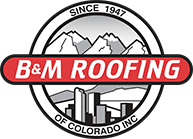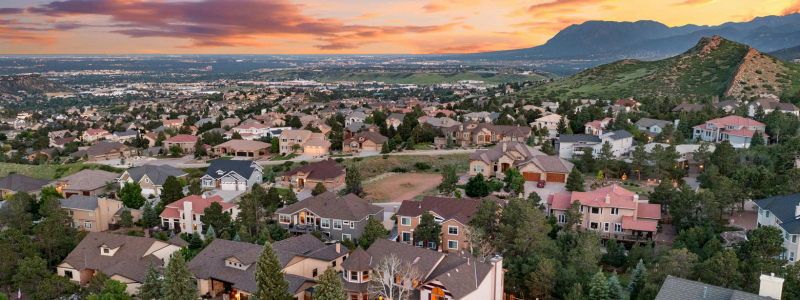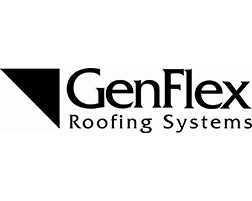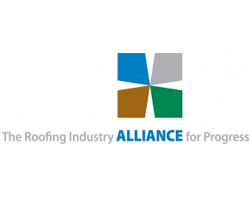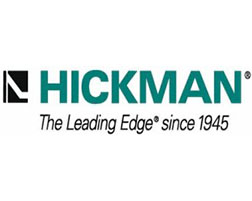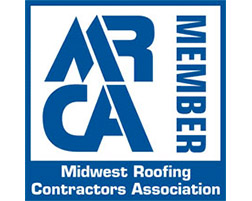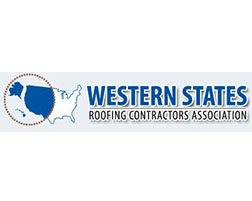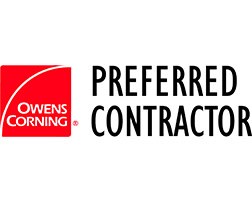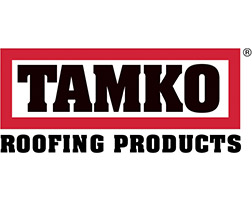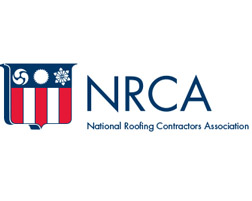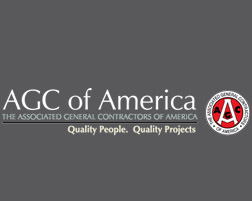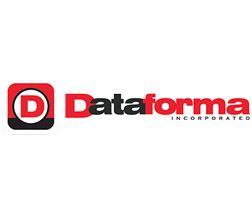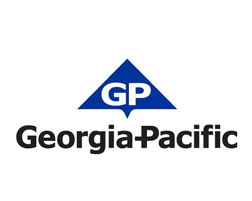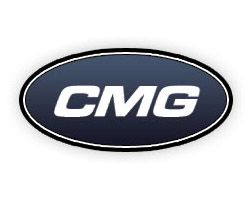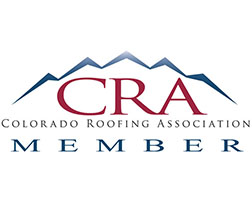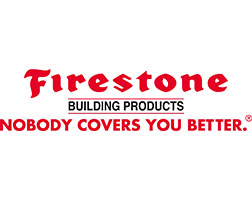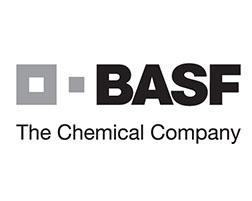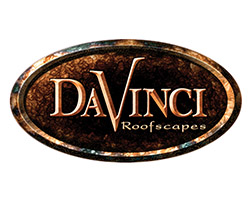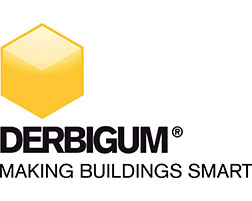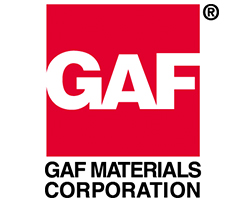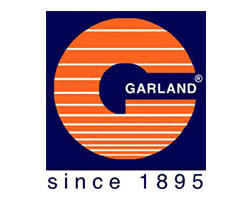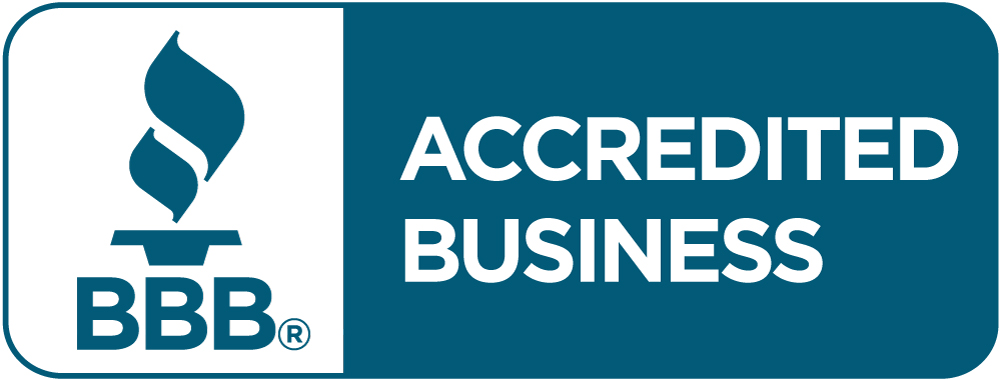Local Emergency Roofer: Why B&M Roofing Is the Roofer You Can Trust
When a roofing emergency strikes, time is everything. Whether it’s a sudden leak during a Colorado thunderstorm or severe hail damage in the middle of the night, knowing who to call can make the difference between a quick fix and long-term property damage. At B&M Roofing, we’re proud to be the local emergency roofer that homeowners and businesses across Colorado trust when disaster hits.
With decades of experience in residential and commercial roofing, our expert team responds fast, works efficiently, and delivers repairs you can count on, day or night.
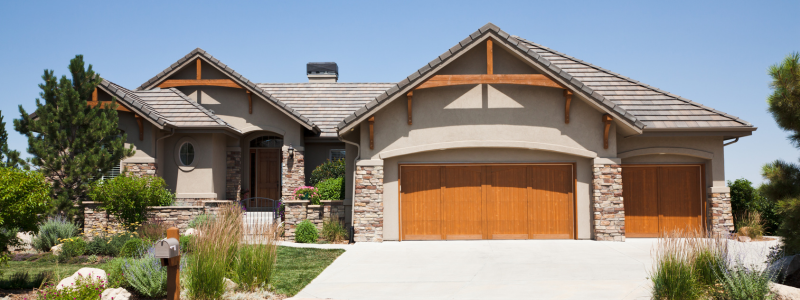
Why You Need a Local Emergency Roofer, You Can Trust
Roofing emergencies are unpredictable. Strong winds, falling trees, heavy snow, or even poorly installed roofing systems can lead to major structural issues without warning. And when the weather turns, or water gets inside, every minute counts.
Here’s why relying on a local emergency roofer like B&M Roofing matters:
- We Know Colorado Weather: From Front Range windstorms to mountain blizzards, we’ve seen it all, and we prepare for it.
- We’re Part of Your Community: As a locally owned and operated business, our team lives and works where you do. That means faster response times and a genuine commitment to doing the job right.
- We’ve Seen Every Type of Emergency: Whether it’s asphalt shingles, flat roofing systems, or metal roofs, our experience spans decades and every roofing material.
What to Expect from B&M Roofing’s Emergency Services
When you contact B&M Roofing for an emergency repair, you’re not just getting a quick patch job. You’re getting a comprehensive service built on professionalism, safety, and quality.
Here’s what happens when you call us:
Immediate Response
Our team is available 24/7 to take your call. We’ll dispatch a crew to your property as soon as possible, usually within hours.
Temporary Protection
We begin by assessing the damage and installing temporary protective measures, such as tarps, to stop further interior damage from rain or snow.
Damage Assessment
Our licensed professionals conduct a full inspection to determine the root cause and extent of the damage. We’ll walk you through your options and discuss the next steps.
Permanent Repairs
Once the weather allows or your insurance claim is approved, we’ll complete long-lasting repairs using high-quality materials tailored to your specific roof type.
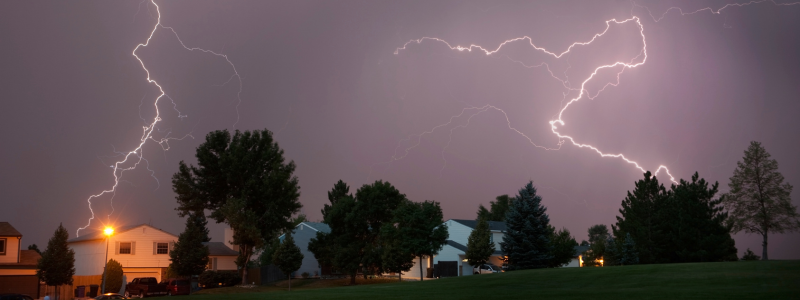
Signs You May Need Emergency Roofing Services
Not all roofing problems are immediately obvious, but these warning signs should never be ignored:
- Visible leaks or water stains inside your home or building
- Missing, torn, or curling shingles after a windstorm
- Sagging rooflines or soft spots when walking on the roof
- Granules collecting in gutters, indicating aging or damage
- A sudden increase in energy bills, which may point to insulation issues caused by roof failure
If you notice any of these issues, contact a local emergency roofer right away before the damage spreads.
Why Local Roofing Matters in an Emergency
You could hire a national chain or wait days for someone from out of town to show up. But when your property is on the line, working with a local emergency roofer makes all the difference.
Fast Response Times
Being headquartered in Colorado means our crews can be on-site quickly, regardless of your location, from Denver and Boulder to Vail and the Western Slope.
Knowledge of Local Codes
We’re up to date on all state and municipal roofing codes. That means your emergency repair won’t just be fast; it will also be thorough. It will be compliant with the latest safety standards and built to withstand the test of time.
Community Accountability
We’ve built our reputation through decades of local service. When you work with B&M Roofing, you’re working with a company that stands behind its work because we’re your neighbors.
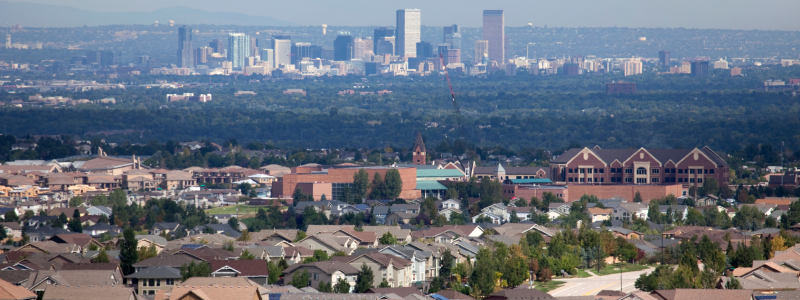
What Sets B&M Roofing Apart?
When it comes to roofing, experience, professionalism, and safety aren’t negotiable. At B&M Roofing, we bring all three plus something more:
- Founded in 1947, we’ve served Colorado for over 75 years.
- Licensed, bonded, and insured, so your property is fully protected
- Certified crews trained in OSHA safety and manufacturer-specific installation techniques
- Trusted by institutions like churches, schools, municipalities, and Fortune 500 companies
- A+ Rating from the Better Business Bureau, backed by decades of customer satisfaction
When you need a local emergency roofer, don’t gamble with an unknown provider. Choose the team that Colorado has trusted for generations.
Preparing for a Roofing Emergency
While emergencies are often unexpected, there are steps you can take to reduce long-term damage:
- Know Your Roofing Materials: Different materials have different failure points. For example, flat roofs may be prone to pooling, while metal roofs can suffer seam separation.
- Keep an Eye on the Weather: Storm warnings, wind advisories, and heavy snow forecasts can help you prepare in advance.
- Schedule Regular Inspections: Annual roof inspections from B&M Roofing can detect minor issues before they become costly emergencies.
Prevent Future Emergencies with a Maintenance Plan
The best emergency is the one you never have to face. That’s why we offer proactive roof maintenance plans for both residential and commercial clients.
Our expert roofing services include:
- Biannual inspections
- Gutter cleaning and debris removal
- Flashing and sealant checks
- Photographic documentation and reporting
- Early warning alerts for problem areas
With scheduled maintenance, you’ll not only reduce the risk of unexpected issues, but you’ll extend the lifespan of your entire roofing system.
Learn more about our roof maintenance services.
Insurance Support During Emergencies
Roof damage can be stressful, but navigating insurance claims shouldn’t be. Our team can help you document the issue, provide repair estimates, and work directly with your adjuster to streamline the process. We’ll ensure you have everything you need to get reimbursed for emergency roof repairs.
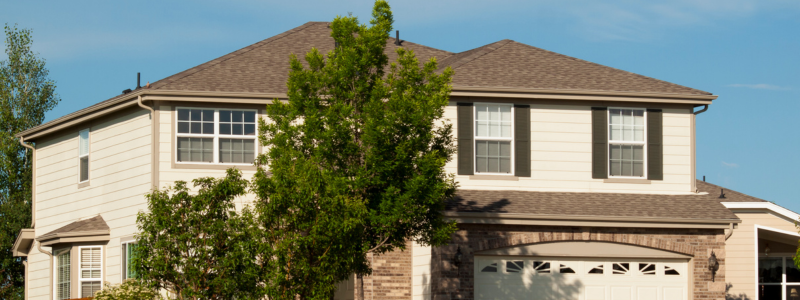
Call B&M Roofing: Your Local Emergency Roofer in Colorado
When your roof fails, it’s essential to act quickly. Don’t waste time searching for a contractor; instead, call B&M Roofing, the trustworthy local emergency roofer known for its rapid response, reliable repairs, and unmatched experience. For immediate assistance, please call us now at (303) 443-5843 or contact us online to request emergency service.
Average Insurance Payout for Hail a Damaged Roof
When a hailstorm hits, your roof is often the first line of defense, and sometimes, the first to take damage. For homeowners in hail-prone areas like Colorado, understanding the average insurance payout for hail-damaged roof repairs is essential to navigating the claims process and protecting your investment.
At B&M Roofing, we’ve worked with thousands of homeowners across the region to assess hail damage and support them through insurance claims. Here’s what you need to know about what insurance typically pays, and how you can ensure you get the compensation you deserve.
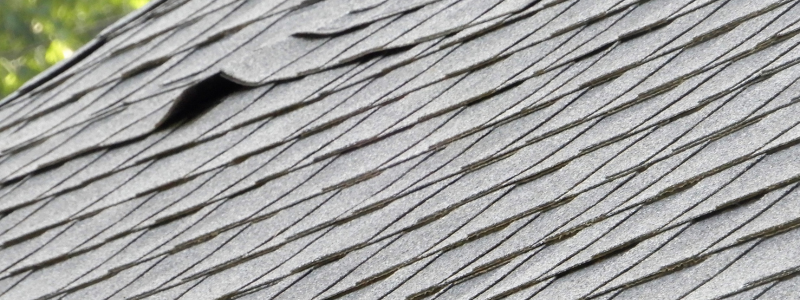
What Is the Average Insurance Payout for Hail Damage to a Roof?
While actual amounts vary depending on several factors, the average insurance payout for hail damage to a roof in the U.S. typically ranges from $8,000 to $15,000. In some cases, especially with high-end roofing materials or extensive damage, payouts can exceed $20,000.
That said, your payout depends on more than just national averages. The extent of the damage shapes it, your roofing materials, your insurer’s policies, and the cost of local labor and materials.
Key Factors That Affect Your Insurance Payout
Several elements can influence the amount you receive for hail damage claims. Understanding these key factors, such as the severity of the damage, the type of roofing materials, the age of your roof and associated depreciation, your insurance policy terms, and local labor and material costs, will help you navigate the claims process more effectively and ensure you maximize your compensation.
Severity of the Damage
Regarding insurance payouts for roofing damage, the extent of the damage plays a significant role in determining the amount compensated. Generally, total roof replacements yield higher payouts than minor spot repairs, as the former involves more extensive work and resources. Damage to crucial components such as the underlayment, flashing, or decking can further increase the overall estimate for repairs. Insurers consider these factors to assess the total costs involved in restoring your roofing system.
Roofing Material Type
The costs of roofing materials can vary significantly depending on the type chosen. For instance, standard asphalt shingles are generally more affordable to replace than other options. In contrast, materials such as metal, tile, or composite shingles tend to be much more expensive, which can substantially increase the overall payout for a roofing project. Understanding these differences is essential for budgeting and planning any roofing work.
Roof Age & Depreciation
Regarding roof insurance claims, it’s essential to understand that older roofs might not be eligible for a full replacement value. If your policy offers actual cash value (ACV), depreciation will be deducted from your claim, significantly affecting the payout. On the other hand, replacement cost value (RCV) policies provide a more advantageous option, as they cover the full cost necessary to replace the roof, regardless of its age, minus your deductible. This distinction can significantly affect how much you receive in the event of a claim.
Policy Terms & Deductibles
When considering your insurance policy, it’s essential to recognize that the coverage you choose significantly impacts your overall experience. Opting for higher deductibles can lead to reduced net payouts, which may affect your financial recovery in the event of a claim. Some insurance policies include specific exclusions or caps related to hail damage, meaning not all damage may be covered under your plan. It’s also worth noting that certain insurers provide discounts for using hail-resistant roofing materials, but these policies may come with stricter criteria regarding payout eligibility. Understanding these factors will help you make more informed decisions about your coverage.
Local Labor and Material Costs
Payouts for insurance claims are tailored to align with regional market rates. In regions such as Colorado, where the expenses for skilled labor and materials tend to be higher, insurance estimates will account for these increased costs. However, these higher expenses must be well-documented to ensure that they are reflected accurately in the payouts.

How to Maximize Your Hail Damage Insurance Payout
Payouts for insurance claims are tailored to align with regional market rates. In regions such as Colorado, where the expenses for skilled labor and materials tend to be higher, insurance estimates will account for these increased costs. However, these higher expenses must be well-documented to ensure that they are reflected accurately in the payouts. To maximize an insurance payout for hail damage, it is crucial to gather thorough documentation of the damage, including photographs and detailed repair estimates. Working with reputable contractors who provide comprehensive assessments can also help substantiate the claim and ensure a fair payout.
Step 1: Document the Damage Immediately
- Take clear, high-resolution photos of hailstones, roof damage, and surrounding property damage.
- Note the date and time of the storm.
- Keep any hailstones in your freezer for size documentation.
Step 2: Get a Professional Roof Inspection
A qualified roofing expert can identify issues that might be missed during a basic visual inspection.
- At B&M Roofing, we provide detailed inspection reports and photo documentation that align with insurance adjuster needs.

Step 3: File Your Claim Promptly
Most insurers have strict deadlines for filing hail damage claims, typically 6 to 12 months.
- Include your inspection report and all photos.
- Be honest and thorough to avoid disputes or delays.
Step 4: Work with a Contractor Experienced in Insurance Claims
Hiring a roofer who understands the insurance process is key.
- We’ve worked directly with insurance companies for decades.
- Our team ensures you’re not underpaid or forced into cutting corners on necessary repairs.
- We meet with adjusters on-site to advocate for fair compensation.
Why Choose B&M Roofing for Hail Damage Claims
B&M Roofing has been Colorado’s trusted roofing partner for over 75 years. Here’s how we help maximize your insurance claim:
- Thorough Inspections: Our experts know precisely what adjusters need to see.
- Reliable Emergency Repairs: We use top-grade materials and industry-best installation practices.
- Insurance Advocacy: We walk you through the claim step by step, from inspection to payout.
- Peace of Mind: No pressure. No shortcuts. Just transparent, dependable service.
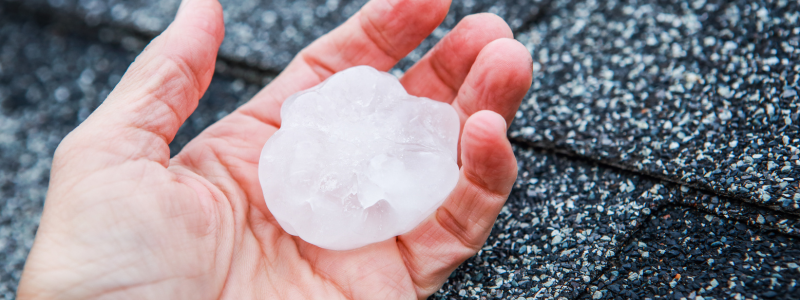
Have Hail Damage? Don’t Wait – Contact B&M Roofing Today!
Knowing the average insurance payout for hail damage roof claims helps you prepare, but every situation is unique. The sooner you act, the better your chances of receiving the full coverage you’re entitled to.
Contact B&M Roofing today for a free hail damage inspection and expert help with your insurance claim.
How Do You Fix a Leaking Roof Without Replacing It?
A leaking roof doesn’t always mean you need to replace the entire thing. In many cases, targeted repairs can resolve the issue effectively and extend the life of your roof. Understanding how to fix a leaking roof without replacing it is essential for homeowners who want to save money, protect their homes, and act fast when water starts dripping from the ceiling.
At B&M Roofing, we’ve helped countless Colorado homeowners navigate roof leak repairs, often without a complete roof replacement. This guide covers everything you need to know to address the problem head-on.

What Causes Roof Leaks?
Roof leaks can come from various sources, and identifying the origin is the first step in deciding whether repair or replacement is needed.
Common causes include:
- Damaged or missing shingles due to wind or storm impact
- Cracked flashing around vents, chimneys, or skylights
- Clogged gutters or downspouts that allow water to pool
- Worn-out sealants around penetrations
- Ice dams form at the roof’s edge during winter.
- General wear and tear on aging roofs
In many of these situations, localized repairs can solve the problem, especially if the rest of the roof is still structurally sound.
Can You Fix a Leaking Roof Without Replacing It?
Yes, in most cases, roof leak repair is possible without replacing the entire roofing system.
The feasibility depends on:
- The Extent of the Damage: A small leak caused by a few missing shingles is typically easy to repair.
- The Age of the Roof: Newer roofs with isolated damage can often be fixed without significant work.
- The Location of the Leak: Leaks near flashings or vents are usually more straightforward to fix.
- Roofing Material Type: Asphalt shingles, tile, and metal roofing have specific repair methods.
If your roof is generally in good condition and the damage is limited, a repair can buy you years of extra life before a complete replacement becomes necessary.
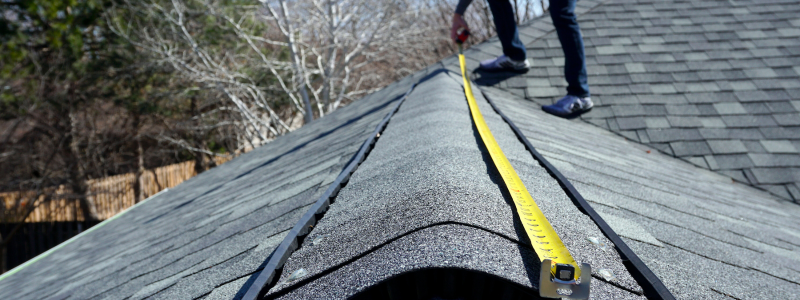
How to Fix a Leaking Roof Without Replacing It
Here’s a step-by-step breakdown of how to tackle roof leaks using effective repair methods:
Identify the Source of the Leak
Begin by inspecting your home’s interior for:
- Water stains on ceilings or walls
- Damp insulation in the attic
- Mold or mildew in corners
Outside, look for:
- Damaged shingles or tiles
- Gaps in flashing
- Soft spots or visible sagging
If you’re not confident locating the leak, a professional roof inspection from a company like B&M Roofing is highly recommended.
Temporary Fixes to Prevent Immediate Damage
If rain is in the forecast and you can’t repair the leak immediately, use these stop-gap measures:
- Tarp the roof: Secure a waterproof tarp over the affected area with roofing nails or weights to prevent further water intrusion.
- Use roofing or caulk: Apply waterproof roof tape or caulking over cracks and holes for a temporary seal.
These are only short-term fixes. You should arrange for a more permanent solution as soon as possible.
Replace Damaged Shingles
If the leak is due to missing or cracked shingles:
- Gently lift the surrounding shingles and remove the damaged ones.
- Slide a new shingle into place and secure it with roofing nails.
- Apply roofing cement over the nail heads for added protection.
Repair Flashing and Seals
Leaking often occurs near roof penetrations, like chimneys and vent pipes:
- Remove cracked or loose flashing.
- Clean the area and apply new flashing with roofing cement.
- Reseal all gaps with a high-quality waterproof sealant.
Apply a Roof Sealant or Coating
For flat or metal roofs, applying a waterproof coating can seal small cracks and prevent future leaks:
- Clean the roof surface thoroughly.
- A roller or brush is used to apply elastomeric sealant across the affected area.
- Let it cure as instructed for maximum protection.
This method works particularly well for roofs with minor wear that aren’t ready for replacement.
Clear Gutters and Downspouts
Backed-up gutters can cause water to pool on the roof and leak into the home. Ensure all gutters and downspouts are:
- Free of leaves, twigs, and debris
- Securely fastened to the fascia.
- Properly directing water away from the home’s foundation.
Regular cleaning helps prevent leaks and preserves the overall health of your roofing system.
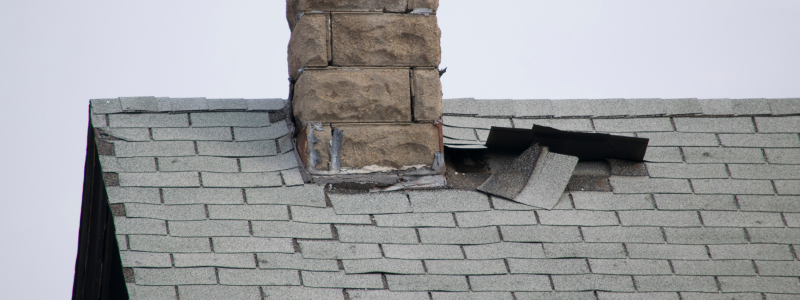
Standard Tools and Materials for Roof Leak Repairs
To successfully patch a leaking roof without replacing it, you’ll likely need the following:
- Roofing cement or caulk
- Flashing tape
- Replacement shingles or tiles
- Waterproof roof sealant
- Roofing nails and a hammer
- Ladder and safety harness
While some of these steps are DIY-friendly, many require experience and safety precautions, especially when working at heights. That’s why professional repair services from B&M Roofing are the safest and most effective option for most homeowners.
When to Call a Professional Roofing Contractor
Some roof leaks are easy to spot and fix, but others are signs of more serious issues. Contact a roofing expert if:
- You can’t locate the leak’s origin
- The roof is leaking in multiple areas.
- There is visible structural damage or widespread mold.
- You’ve tried a repair, and the leak persists.
B&M Roofing offers comprehensive roof inspections, targeted leak repairs, and expert guidance on whether repair or replacement is the right option. We’re here to ensure your roof stays strong without unnecessary costs.
How to Prevent Roof Leaks in the Future
An ounce of prevention is worth a pound of repair. Follow these maintenance tips to reduce the risk of future leaks:
- Inspect your roof at least twice a year, especially after storms.
- Clean gutters and downspouts regularly
- Trim overhanging tree limbs to prevent debris accumulation.
- Seal roof penetrations such as chimneys and vent pipes
- Schedule professional roof inspections annually.
Staying proactive is the best way to extend the lifespan of your roof and avoid emergency leaks.
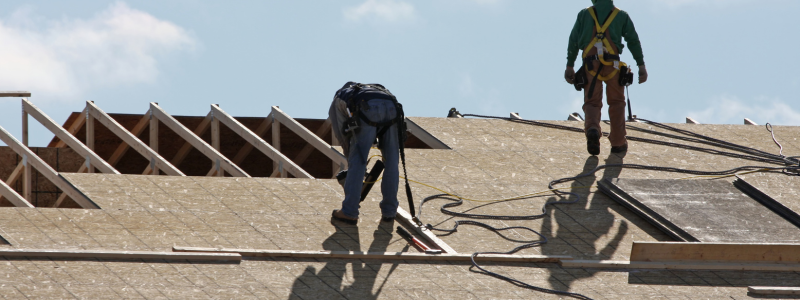
Repair First, Replace Only When Necessary
If you ask, “How do you fix a leaking roof without replacing it?” The answer is to act quickly, identify the source, and apply targeted repairs that restore integrity without the cost of full replacement.
Whether your leak is due to storm damage, faulty flashing, or aging shingles, B&M Roofing has the tools, experience, and dedication to get the job done right.
Need a Professional Opinion?
Contact B&M Roofing today for a thorough roof inspection and honest assessment. We’ll help you fix your roof leak without replacing it, unless necessary.
Seasonal Home Maintenance Checklist
At B&M Roofing, we understand that a well-maintained home is essential for preserving its value, avoiding expensive repairs, and ensuring a safe and comfortable living space. Seasonal changes, from heavy snowfall to intense summer heat, can present challenges, affecting your home’s structure, roofing, and long-term durability.
That’s why we’re here to help you avoid potential issues with our seasonal home maintenance checklist. Whether you’re preparing for winter storms or gearing up for summer heatwaves, our comprehensive guide is designed to assist you in keeping your home in prime condition year-round. Trust B&M Roofing to help protect your investment and maintain the integrity of your home with expert roofing services.

Spring Home Maintenance Checklist
Spring is the perfect time to inspect and repair any damage caused by harsh winter conditions. With warmer weather and increased rainfall, prioritizing your home’s exterior and roof is essential.
Roof Inspection & Repairs
- Check for winter damage, such as missing or cracked shingles
- Inspect the roof for leaks or weak spots
- Clear gutters and downspouts to prevent water buildup
- Schedule a professional roofing inspection with B&M Roofing
Exterior Home Maintenance
- Power wash siding, brick, or stucco to remove dirt and mildew
- Inspect the foundation for cracks or damage
- Clean and repair window screens
HVAC and Plumbing Checks
- Service your air conditioning unit before the summer heat arrives
- Inspect exposed pipes for leaks, especially outdoor faucets
- Check sump pump functionality to prevent basement flooding
Outdoor & Lawn Care
- Trim trees and shrubs away from the roof and gutters
- Inspect the deck, patio, and fences for damage and reseal if needed
- Test your irrigation system and repair leaks

Summer Home Maintenance Checklist
As summer arrives with soaring temperatures and the possibility of storms, we must prioritize adequate ventilation in our living spaces. Additionally, it’s a key time to implement effective pest control measures and maintain our outdoor areas to ensure a comfortable and safe environment. Follow these Summer home maintenance tips.
Roof & Gutter Maintenance
- Check for signs of sun damage or warping on shingles
- Ensure gutters are clear of debris to handle sudden summer storms
- Look for signs of moss or mold growth on the roof
Outdoor Living Areas
- Inspect decks, patios, and porches for loose boards or cracks
- Clean and seal wooden structures to protect against moisture
- Check outdoor furniture for wear and tear
Pest Control & Ventilation
- Inspect the attic and basement for signs of rodents or insects
- Ensure proper attic ventilation to prevent heat buildup
- Clean and check exhaust fans in kitchens and bathrooms
HVAC & Electrical Systems
- Change air filters in air conditioning units
- Test ceiling fans and reverse their direction for cooling efficiency
- Ensure outdoor lighting and security cameras are functional

Fall Home Maintenance Checklist
As temperatures begin to decline, it’s essential to prepare your home for the colder months ahead. Fall is the ideal time to enhance your home’s insulation, inspect your heating systems, and prepare the roof for potential winter storms. Additionally, ensuring that windows and doors are properly sealed can help maintain energy efficiency and keep your home comfortable during frigid weather.
Roof & Gutter Preparations for Winter
- Remove leaves and debris from gutters to prevent ice dams
- Inspect attic insulation and ventilation to prevent heat loss
- Schedule a professional roofing inspection before winter arrives
Exterior & Lawn Care
- Trim overhanging branches that could fall on the roof during storms
- Drain and store garden hoses before the first freeze
- Aerate and fertilize the lawn to prepare for winter
Heating & Fireplace Maintenance
- Schedule a furnace inspection to ensure efficiency
- Clean the chimney and check for blockages before using the fireplace
- Test carbon monoxide and smoke detectors
Weatherproofing
- Seal cracks in windows and doors to improve energy efficiency
- Insulate exposed pipes to prevent freezing
- Apply weather stripping around doors to block drafts
Winter Home Maintenance Checklist
The winter season can be particularly unforgiving for homes, making it essential to take preventive measures against frozen pipes, excessive heat loss, and potential roof damage from accumulating snow and ice. Proper maintenance and preparation can help safeguard your property and ensure it remains comfortable and secure throughout the cold months.
Roof Snow & Ice Management
- Clear snow buildup from the roof to prevent ice dams
- Check for leaks or drafts in the attic
- Ensure proper ventilation to reduce condensation
Indoor Safety & Efficiency
- Test smoke and carbon monoxide detectors monthly
- Reverse ceiling fan direction to push warm air downward
- Inspect windows and doors for drafts and seal as needed
Plumbing & Heating Precautions
- Keep pipes from freezing by maintaining consistent temperatures
- Open cabinet doors under sinks to allow warm air to circulate
- Monitor your home’s humidity levels to prevent condensation and mold growth

When to Call a Professional
While homeowners can do many seasonal maintenance tasks, some require professional expertise. Knowing when to seek professional help can prevent minor problems from turning into costly repairs.
Signs You Need a Roofing Professional
Signs of roof issues can include missing or curling shingles, water stains appearing on ceilings or walls, and sagging or soft spots on the roof. Additionally, homeowners might notice leaks or drafts in the attic, indicating potential problems that must be addressed.
Why Choose B&M Roofing?
With over 75 years of experience in the roofing industry, B&M Roofing is your trusted partner for expert inspections, repairs, and maintenance to safeguard your home throughout the year. Their seasoned team delivers a full range of services, from routine inspections to emergency repairs, ensuring your roof remains in top condition. Don’t wait, schedule a professional roof inspection today and benefit from the exceptional service that comes with decades of expertise at B&M Roofing!
Get in Touch With B&M Roofing For Expert Roof Maintenance!
A well-executed seasonal home maintenance checklist helps homeowners avoid expensive repairs, improve energy efficiency, and keep their homes in excellent condition year-round. By staying proactive with these tasks, you can ensure your home remains safe and comfortable, regardless of season.
For professional roofing maintenance and inspections, trust the experts at B&M Roofing. Contact us today to schedule your seasonal checkup and keep your home in shape all year!
When Should You Replace a Roof?
Your roof protects your property from the elements while maintaining structural integrity and energy efficiency. But like any part of your home or business, it won’t last forever. Knowing when you should replace a roof is essential to avoid costly repairs and ensure the safety of your property.
At B&M Roofing, we understand that roof replacement is a significant investment. That’s why we’re here to guide you through the process, offering expert inspections, high-quality materials, and professional installation to give you peace of mind.

Why Roof Replacement Matters
A well-maintained roof is your first line of defense against the elements. Over time, even the best roofing materials will show signs of wear, leaving your property vulnerable to water damage, energy inefficiency, and structural issues.
Delaying a necessary roof replacement can result in:
- Expensive Repairs: Ignored issues can escalate, causing extensive damage.
- Decreased Property Value: A deteriorating roof can affect the resale value of your home or business.
- Safety Concerns: Compromised roofs may pose risks to occupants, especially during severe weather.
At B&M Roofing, we emphasize proactive maintenance and timely roof replacement to save you time, money, and stress.
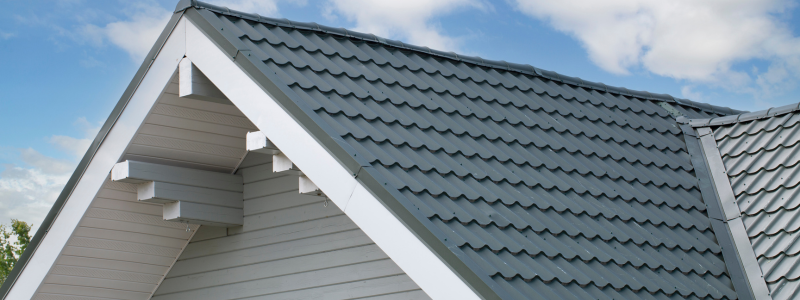
Key Signs That Indicate You Should Replace Your Roof
Here are the most common indicators that it might be time for a new roof:
Age of the Roof
When considering the longevity of different roofing materials, asphalt shingles typically last around 20 to 25 years, while metal roofs can endure for approximately 40 to 70 years. Tile roofs are known for their remarkable durability, often exceeding 50 years. If your roof is approaching the end of its expected lifespan, it’s essential to start planning for a replacement to ensure your home’s continued protection and integrity.
Visible Damage
Homes can exhibit several warning signs that indicate potential roofing issues. Cracked, curling, or missing shingles are common problems that should not be overlooked, as they can compromise the roof’s integrity. Additionally, damaged flashing around vents, chimneys, or skylights can lead to leaks and further damage if not addressed promptly. It’s also important to watch for sagging rooflines, which could suggest underlying structural issues requiring immediate attention.
Leaks and Water Damage
Water leaks can pose serious threats to your home, leading to substantial damage and costly repairs if not addressed promptly. One of the first signs of a potential leak is discoloration on walls or ceilings, which can appear as water stains, mold growth, or even peeling paint. These indicators often suggest water has infiltrated the structure, compromising aesthetics and safety. Inspecting areas prone to leaks is crucial. Pay particular attention to places like the roof’s valleys, flashings, and around vents where materials may deteriorate over time.
High Energy Bills
Being attentive to roofing issues is crucial for maintaining the structural integrity of your home and can significantly affect your energy bills. Poorly maintained roofs with cracked, curling, or missing shingles can lead to inadequate insulation and ventilation. This means that conditioned air—whether heated or cooled—can escape more easily, forcing your HVAC system to work harder to maintain a comfortable temperature. Damaged flashing around vents, chimneys, and skylights can also allow air leaks, increasing energy costs. When your roof is compromised, your home may become less energy-efficient, leading to higher heating and cooling expenses each month.
Storm Damage
Storm damage can significantly impact the integrity and longevity of your roof. High winds, heavy rain, hail, and even snow can create vulnerabilities, exposing your home to further risks. After a storm, it’s essential to inspect your roof for visible signs of damage thoroughly. Look for missing or damaged shingles, fallen debris, bent flashing, or leaks in the attic or ceilings. Hail can cause dents and punctures, particularly on asphalt shingles and metal roofs, while strong winds can lift shingles, leaving them exposed. Water can seep through cracks or gaps, leading to mold growth, wood rot, and structural issues. If you suspect storm damage, addressing roof damage promptly is crucial to prevent more extensive problems.
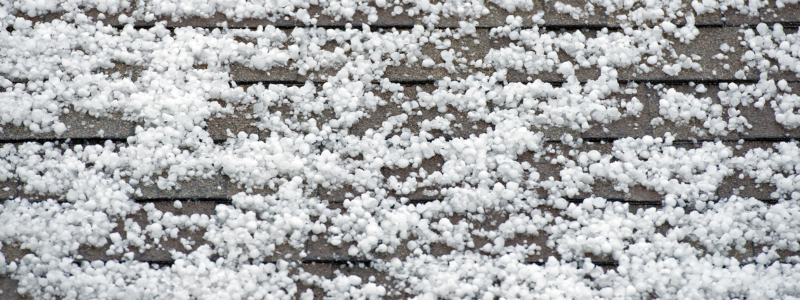
Factors to Consider When Deciding to Replace a Roof
Sometimes, the decision to replace your roof isn’t straightforward. Here are a few considerations to help decide whether or not replacing your roof is right for you:
- Material Type and Lifespan: Different materials have varying durability. B&M Roofing helps you choose the best option for your budget and needs.
- Cost of Repairs vs. Replacement: If repair costs approach or exceed 50% of a replacement, replacing the roof is usually more cost-effective.
- Local Climate: Harsh weather conditions in your area can accelerate roof wear and tear.
- Future Plans: If you’re renovating or planning to sell, a new roof can enhance aesthetics and resale value.
How B&M Roofing Can Help with Your Roof Replacement
At B&M Roofing, we aim to make the roof replacement decision as straightforward as possible. Our knowledgeable team conducts comprehensive inspections to assess your roof’s condition and evaluate all relevant factors. We will help you determine the best materials for your specific needs and location, providing estimates that compare repair costs to the benefits of a full roof replacement. Our commitment is to support you through every stage of the process, ensuring you make an informed decision that enhances the safety and value of your home.
Steps to Take Before Replacing Your Roof
- Schedule a Roof Inspection: Start with a professional assessment from B&M Roofing to understand the condition of your roof.
- Budget for the Project: Plan for costs and explore financing options if needed. We’ll help you get the best value for your investment.
- Choose a Trusted Contractor: Selecting the right contractor is key. With B&M Roofing’s reputation for excellence and customer satisfaction, you’re in expert hands.
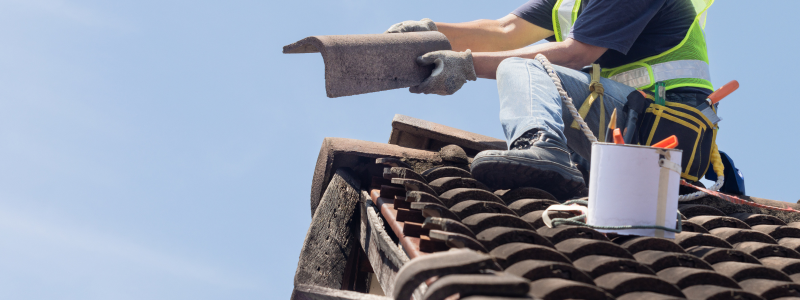
Trust B&M Roofing for Your Roof Replacement Needs
Don’t wait until minor issues become major problems. At B&M Roofing, we’re committed to providing high-quality roof replacements that protect your home or business for years to come. Our experienced team ensures every project is handled with precision and care.
Contact our expert team today to get started with your roofing replacement! We are here to help through every step of the process. Schedule a free roof inspection today and take the first step toward a safer, more reliable roof.
How to Hire a Roofing Contractor
When it comes to your roof, hiring the right contractor is crucial. Your roof is one of the most essential parts of your home, protecting you from the elements and ensuring your home’s structural integrity. But how do you choose the right professional for the job? This guide will walk you through how to hire a roofing contractor, ensuring you find a reliable, experienced, and trustworthy expert to handle your roofing needs.
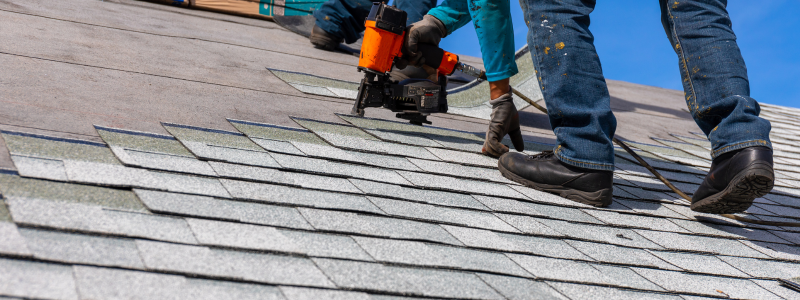
The Importance of Hiring a Licensed Roofing Contractor
Before diving into the hiring process, it’s essential to understand the significance of working with a licensed roofing contractor. A licensed contractor has met state training, experience, and safety standards requirements. This licensing ensures you work with someone knowledgeable about the best roofing practices and local building codes.
Why It Matters:
- Safety: A licensed contractor will follow safety protocols, reducing the risk of accidents during the job.
- Quality Assurance: Licensed contractors are more likely to provide high-quality work, protecting your investment.
- Insurance Coverage: In case of any mishaps, their insurance will cover damages or injuries, giving you peace of mind.
Where to Start: Researching Roofing Contractors
The first step in the process of how to hire a roofing contractor is research. Here are some practical ways to find qualified contractors:
- Ask for Referrals: Word-of-mouth recommendations from friends, family, or neighbors can lead you to trustworthy contractors with a proven track record.
- Online Research: To assess the contractor’s reputation, check online reviews and ratings on platforms like Google, Yelp, or the Better Business Bureau (BBB).
- Industry Associations: Utilize professional organizations such as the National Roofing Contractors Association (NRCA), which can connect you with vetted roofing professionals in your area.
These steps will help you create a shortlist of contractors worth considering.
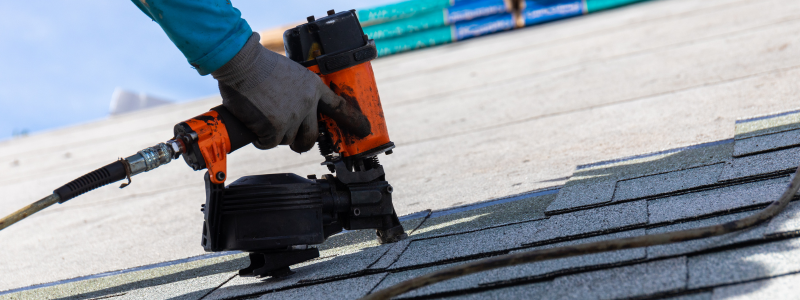
Key Questions to Ask a Roofing Contractor
Once you’ve identified potential contractors, it’s time to ask the right questions to ensure you’re hiring the best roofing contractor for your project. Consider asking:
- Are you licensed and insured?
- How long have you been in business?
- Can you provide references or a portfolio of past work?
- What is your warranty on materials and craftsmanship?
- How do you handle unexpected repairs or additional work?
These questions help gauge the contractor’s experience and reliability. Discussing payment schedules, project timelines, and how the contractor will handle any unexpected complications during the job is also essential.
Verifying Credentials and Experience
After gathering information through your questions, it’s time to verify the contractor’s credentials and experience. Here’s what to look for:
- Licensing and Insurance: Ask for proof of licensing and insurance. This includes general liability insurance and worker’s compensation insurance to protect you in case of any accidents.
- Experience: An experienced roofing contractor will have a solid track record of completed projects. Look for someone with at least 5-10 years of experience in the industry. Our expert team has been helping Colorado residents find the right roof for over 75 years.
- References: Contact previous clients for firsthand feedback on the contractor’s work quality, timeliness, and professionalism.
Verifying these credentials is critical to ensure you’re hiring a contractor who can deliver both skill and accountability.
Warning Signs of an Untrustworthy Contractor
Unfortunately, not all contractors operate with the same level of integrity. To avoid hiring a shady contractor, be on the lookout for these red flags:
- Lack of Proper Licensing or Insurance: If a contractor can’t provide proof of licensing or insurance, steer clear.
- High-Pressure Sales Tactics: Legitimate contractors won’t pressure you into making hasty decisions or demand full payment upfront.
- No References or Portfolio: Reputable contractors will gladly provide references and show off past work.
- Storm Chasers: Be wary of “storm-chasing” contractors who appear uninvited after a storm and offer to repair your roof at a “discount.”
By avoiding these warning signs, you can protect yourself from scams and ensure you hire a reliable roofing professional.
Getting Multiple Bids and Comparing Estimates
When considering how to hire a roofing contractor, one crucial step is obtaining multiple bids from different companies. Here’s why this is important:
- Competitive Pricing: Gathering several estimates ensures you’re not overpaying for your roof repair or replacement.
- Transparency: A detailed bid will break down the costs for labor, materials, permits, and any other fees, helping you understand where your money is going.
- Red Flags: Be wary of bids that are significantly lower than others. Low bids could indicate subpar materials or cutting corners on the job.
Once you have your bids, compare the price and the services included. Look for transparency, professionalism, and an accurate timeline for project completion.
Understanding Roofing Contracts and Warranties
Before signing the dotted line, ensure you thoroughly understand the roofing contract. Here’s what a comprehensive contract should include:
- Scope of Work: A detailed description of what will be done, from the materials used to the areas being repaired or replaced.
- Timeline: Clear start and end dates for the project.
- Payment Schedule: The payment plan includes any deposit required upfront and the amount due upon completion.
- Warranties: Ensure the contractor offers warranties on both materials and craft. A warranty protects against faulty materials or poor installation.
Having a clear, well-documented contract ensures that both parties have a mutual understanding of the expectations and responsibilities.
Finalizing Your Decision
Now that you’ve collected bids, verified credentials, and assessed contracts, it’s time to decide. Here are a few tips:
- Compare Estimates: Look at the overall value offered, not just the price. A higher price may come with better warranties, materials, and experience. Also, make sure the type of roof you are quoted makes sense for your home or business.
- Review the Contractor’s Reputation: Double-check reviews, references, and past projects to ensure consistency in quality and service.
- Make an Informed Choice: Choose the contractor with the best experience, transparency, and reliability.
For a trusted, experienced, and fully licensed roofing contractor, consider B&M Roofing for your next roofing project. Our commitment to quality, safety, and customer satisfaction ensures you’ll have a roof that stands the test of time.

Hiring A Roofing Service Contractor
Hiring a roofing contractor can be manageable. Following the above steps, you can confidently select a qualified professional to handle your roofing project. From verifying credentials to comparing bids and understanding contracts, these best practices will ensure you hire the best roofing contractor for your needs.
Ready to get started? Contact B&M Roofing today for a consultation with our expert team.
Roofing Contractor in Denver
Maintaining a sturdy and reliable roof is crucial for protecting your home or business from the elements, especially in a place like Denver, Colorado, where the weather can be unpredictable and harsh. That’s why it’s essential to ensure it’s always in top condition. When it comes to roofing repairs and maintenance, finding a trustworthy and experienced roofing contractor in Denver can make all the difference. B&M Roofing Services has been a cornerstone in the Denver roofing industry, offering top-notch services to both residential and commercial clients. With a reputation for quality work and exceptional customer service, they are the go-to choice for anyone looking to keep their roof in the best possible shape.
In this brief article, we’ll explore the best practices for booking a roofing contractor in Denver, highlighting the expertise provided by us at B&M Roofing. Whether you’re dealing with a minor repair or planning a complete roof replacement, understanding the process and knowing what to look for in a contractor will help you make informed decisions and ensure your roof remains strong and durable for years to come.

Why Regular Roof Maintenance is Essential
Denver poses unique challenges. The city experiences a wide range of weather conditions, from heavy snowfall and ice in the winter to intense sunlight and thunderstorms in the summer. These varying conditions can cause significant wear and tear on your roof, making regular inspections and maintenance crucial.
Importance of Regular Inspections
Regular roof inspections help identify and address minor issues before they become major problems. Small leaks, loose shingles, or minor damage can quickly escalate if left unattended, leading to costly repairs or even a full roof replacement. By scheduling regular inspections, you can catch these issues early and extend the life of your roof.
Common Roofing Issues in Denver
Denver’s climate can lead to common roofing problems, including:
- Snow and Ice Damage: Heavy snowfall can add weight to your roof, potentially causing structural damage. Ice dams can form, leading to water seepage and leaks.
- UV Damage: Intense sunlight can cause roofing materials to deteriorate, leading to cracking and fading.
- Wind Damage: Strong winds can lift and remove shingles, exposing the underlying materials to the elements.
- Hail Damage: Hailstorms are common in Denver and can cause significant damage to roofing materials, leading to leaks and structural issues.
Long-Term Benefits of Timely Repairs
Timely roof repairs not only prevent minor issues from becoming major problems but also offer several long-term benefits:
- Cost Savings: Addressing minor issues promptly can save you money by avoiding costly repairs or a full roof replacement down the line.
- Energy Efficiency: A well-maintained roof provides better insulation, reducing energy costs for heating and cooling your home.
- Increased Property Value: A sturdy, well-maintained roof enhances the overall value of your property, making it more attractive to potential buyers.
Key Factors for Choosing a Roofing Contractor
Selecting the right roofing contractor is crucial to ensuring the success and quality of your roofing project. Here are some key factors to consider when choosing a roofing contractor in Denver:
Licenses and Certifications
Ensure the roofing contractor you choose is properly licensed and certified to operate in Colorado. This guarantees that they meet the necessary state regulations and standards. Certified contractors are more likely to adhere to industry best practices and provide high-quality work.
Experience with Denver-Specific Roofing Challenges
Denver’s unique climate requires specialized knowledge and experience. Choose a contractor with a proven track record of handling Denver’s weather-related roofing issues, such as heavy snowfall, hail, and intense UV exposure. Experienced contractors will know the best materials and techniques to use for long-lasting results.
Customer Reviews and Testimonials
Research the contractor’s reputation by reading customer reviews and testimonials. Look for feedback on their professionalism, quality of work, timeliness, and customer service. Positive reviews and high ratings are indicators of a reliable contractor. Additionally, ask the contractor for references from previous clients and follow up with them to get firsthand accounts of their experiences.
Warranty and Insurance Considerations
A reputable roofing contractor should offer warranties on both their workmanship and the materials they use. This ensures that you’re protected against any defects or issues that may arise after the project is completed. Additionally, verify that the contractor has adequate insurance coverage, including workers’ compensation and liability insurance. This protects you from any potential liability in case of accidents or damages during the project.
Detailed Estimates and Transparent Pricing
Request detailed written estimates from potential contractors. A comprehensive estimate should include the scope of work, materials to be used, labor costs, and a projected timeline. Transparent pricing and clear communication help avoid misunderstandings and ensure that you know exactly what to expect.
Local Knowledge and Community Involvement
A local contractor with a strong presence in the Denver community is more likely to be invested in maintaining a good reputation. Local contractors are familiar with local building codes and regulations, ensuring compliance with all requirements. They are also more accessible for follow-up services and warranty claims.

Primary Services Offered by B&M Roofing
B&M Roofing Services provides a comprehensive range of roofing solutions tailored to meet the needs of both residential and commercial clients in Denver. Here are the primary services they offer:
Residential Roofing Services
B&M Roofing is dedicated to helping homeowners protect their most valuable investment. Their residential roofing services include:
- Roof Installation: Whether you’re building a new home or replacing an old roof, B&M Roofing offers expert installation services using high-quality materials. They work with various roofing types, including asphalt shingles, metal roofing, tile, and more.
- Roof Repairs: From minor leaks to significant storm damage, B&M Roofing can handle all types of repairs. Their team quickly identifies the issue and implements effective solutions to restore your roof’s integrity.
- Roof Inspections: Regular roof inspections are essential for maintaining your roof’s health. B&M Roofing provides thorough inspections to catch problems early and recommend necessary maintenance or repairs.
- Roof Maintenance: Preventative maintenance services help extend the lifespan of your roof. B&M Roofing offers customized maintenance plans to keep your roof in top condition year-round.
Commercial Roofing Solutions
B&M Roofing understands the unique challenges of commercial roofing and offers specialized services to meet the needs of businesses and commercial properties, including:
- Commercial Roof Installation: They provide expert installation services for various commercial roofing systems, including flat roofs, TPO, EPDM, and more. Their team ensures that the roofing system is durable and energy-efficient.
- Commercial Roof Repairs: Prompt and effective repair services minimize downtime and protect your business operations. B&M Roofing is experienced in handling complex commercial roof repairs.
- Commercial Roof Maintenance: Regular maintenance is crucial for commercial roofs to prevent costly damage and ensure compliance with warranty requirements. B&M Roofing offers tailored maintenance plans for commercial properties.
- Roof Coatings: Roof coatings can extend the life of your commercial roof, improve energy efficiency, and reduce maintenance costs. B&M Roofing applies high-quality coatings that offer excellent protection and durability.
Emergency Repair Services
Roofing emergencies can happen at any time, and B&M Roofing is ready to respond quickly to mitigate damage and restore your roof. Their emergency services include:
- Storm Damage Repair: Severe weather can cause significant damage to your roof. B&M Roofing offers rapid response and expert repair services to address storm-related issues.
- Leak Repair: Quick and effective leak repair services prevent water damage to your home or business. B&M Roofing’s team identifies the source of the leak and provides a long-lasting fix.
Preventative Maintenance Programs
B&M Roofing’s preventative maintenance programs are designed to keep your roof in optimal condition, preventing major issues and extending its lifespan. Their maintenance services include:
- Regular Inspections: Scheduled inspections to identify potential problems early.
- Routine Maintenance: Services such as cleaning gutters, checking for loose or damaged shingles, and ensuring proper drainage.
- Detailed Reports: Comprehensive reports detailing the condition of your roof and any recommended actions.
Tips for Preparing for Your Roofing Service Appointment
Proper preparation for your roofing service appointment can ensure the process goes smoothly and efficiently. Here are some essential tips to help you get ready for your appointment with B&M Roofing Services:
What to Expect During the Inspection
Understanding what happens during a roof inspection can help you prepare adequately:
- Thorough Examination: The roofing specialist will conduct a detailed inspection of your roof, including the interior and exterior. They will look for signs of damage, wear and tear, and potential problem areas.
- Photographic Evidence: To provide a clear understanding of the roof’s condition, the inspector may take photos of any issues they find. This visual documentation helps explain the recommended repairs or replacements.
- Discussion of Findings: After the inspection, the specialist will discuss their findings with you, explaining any issues and suggesting the best course of action.
How to Prepare Your Home or Business
Preparing your property for a roofing service can help the process go more smoothly and protect your belongings:
- Clear the Area: Ensure that the area around your home or business is clear of any obstacles. Remove vehicles from the driveway and keep pets and children indoors to avoid any accidents.
- Protect Belongings: Inside your home, cover or move valuable items, especially in the attic, to protect them from dust or debris that might fall during the roofing work.
- Inform Neighbors: If your roofing project might affect your neighbors, such as noise or debris, it’s courteous to inform them ahead of time.
Understanding the Timeline and Scope of Work
Knowing what to expect in terms of timeline and work scope can help you plan better:
- Project Timeline: B&M Roofing will provide a detailed timeline outlining each phase of the project, from preparation to completion. Understand the start and end dates and any potential factors that might affect the timeline, such as weather conditions.
- Scope of Work: Be clear on what the project entails. This includes the type of materials being used, specific repairs or installations, and any additional work such as gutter replacement or insulation improvements.
- Communication: Establish a clear line of communication with the project manager or roofing specialist. This ensures that you stay informed about progress and can address any concerns promptly.
Preparing for Disruptions
Roofing projects can cause some disruptions. Here’s how to prepare:
- Noise: Roofing work can be noisy. Plan activities around the expected noise level, and inform any household members or employees about the potential disruptions.
- Debris: There may be debris around your property during the project. Ensure the work area is safe and avoid unnecessary access to the area to prevent accidents.
Post-Service Checklist
Once the roofing service is complete, follow this checklist to ensure everything is in order:
- Inspection: Conduct a walkthrough with the roofing specialist to inspect the completed work. Ensure all agreed-upon repairs or installations have been carried out to your satisfaction.
- Clean-Up: B&M Roofing will handle the clean-up process, ensuring your property is left in good condition. Confirm that all debris has been removed and the site is clean.
- Final Documentation: Obtain any final documentation, such as warranty information and maintenance tips, from the roofing specialist.
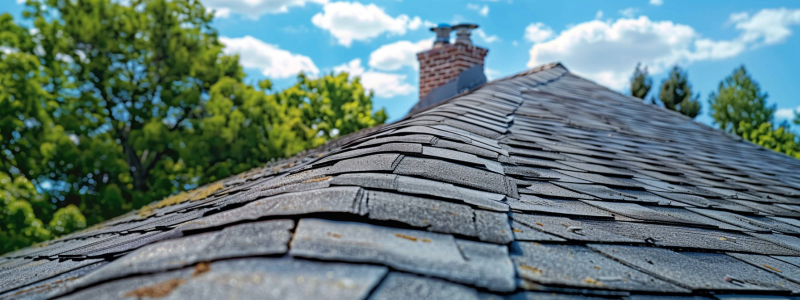
Final Advice
Choosing the right roofing contractor is essential to ensure the longevity and safety of your roof. Here are the key points to consider when booking a roofing contractor in Denver:
- Importance of Regular Maintenance: Regular roof inspections and timely repairs are crucial to prevent small issues from becoming major problems, saving you money in the long run.
- Factors for Choosing a Contractor: Look for licenses and certifications, experience with Denver-specific roofing challenges, positive customer reviews, and transparent pricing. Ensure the contractor offers warranties and has adequate insurance coverage.
- Booking Process with B&M Roofing Services: The process is straightforward, involving an initial consultation, detailed inspection, transparent estimate, scheduling, and clear communication throughout the project.
- Primary Services Offered: B&M Roofing provides comprehensive services, including residential and commercial roofing, emergency repairs, and preventative maintenance programs.
- Success Stories and Testimonials: Satisfied customers and successful projects highlight B&M Roofing’s commitment to quality and customer satisfaction.
- Preparation Tips: Properly prepare for your roofing service appointment by clearing the area, protecting belongings, understanding the timeline, and being ready for any disruptions.
B&M Roofing Services stands out as a reliable and experienced choice for all your roofing needs in Denver. Their extensive range of services, commitment to quality, and customer-centric approach ensure exceptional results. Whether you need minor repairs, a complete roof replacement, or routine maintenance, B&M Roofing has the expertise and resources to deliver.
Don’t wait until small issues become major problems. Contact B&M Roofing Services today to schedule a consultation and take the first step towards a safer, more durable roof. Protect your investment and enjoy the confidence that comes with knowing your roofing needs are in the hands of experts.
Roofing Safety Standards and Best Practices
Roofing projects, be it new installations, repairs, or maintenance, always carry inherent risks. These risks are not only for those working directly on the roof, but also for the occupants of the property and passersby. Therefore, recognizing and mitigating these risks through the adoption of “Roofing Safety Standards and Best Practices” is of utmost importance to ensure that roofing projects are completed without any accidents. Adhering to these standards not only protects individuals but also safeguards the property from potential damage.
The concept of roofing safety encompasses a broad range of practices, from the correct use of equipment to the implementation of fall prevention measures. For homeowners and business owners unfamiliar with the intricacies of roofing, understanding these safety standards might seem daunting. However, these standards exist to preserve human life and property integrity, ensuring that roofing professionals are equipped with the knowledge and tools necessary to perform their tasks safely.
With this article, we at B&M Roofing aim to demystify roofing safety standards and best practices, making this critical information accessible to non-specialists. By providing a comprehensive overview of roofing safety, we hope to empower you with the knowledge to make informed decisions regarding your roofing projects, ensuring safety is always at the forefront.
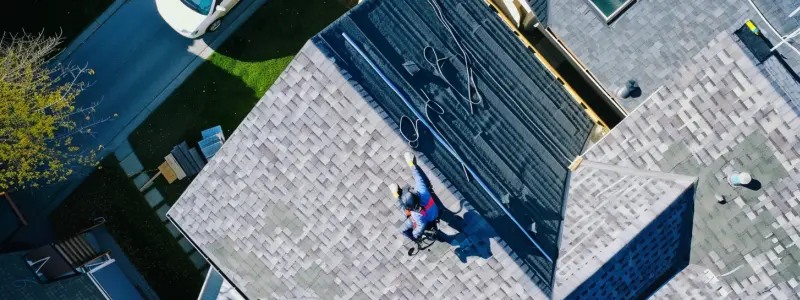
Understanding Roofing Safety Standards
Roofing safety standards are a set of rules and guidelines that aim to safeguard workers, homeowners, business owners, and the general public during roofing projects. These standards encompass a broad range of practices, which include the appropriate use of safety equipment, methods for reducing the risk of falls, and the proper handling of roofing materials and tools.
At their core, roofing safety standards aim to:
- Minimize occupational hazards: By providing clear guidelines on safe working practices, these standards help reduce the risk of accidents and injuries on roofing projects.
- Ensure quality workmanship: Safe work environments lead to better-quality roofing installations and repairs. Workers are more likely to perform their best when they feel secure.
- Protect property: By following safety protocols, the risk of damage to the property during roofing projects is significantly reduced.
- Comply with legal requirements: In many jurisdictions, adhering to roofing safety standards is not just best practice—it’s the law. Non-compliance can result in hefty fines and legal liabilities.
Extensive research and industry experts establish roofing safety standards. National or international safety organizations often set these standards, such as OSHA. The organizations continually update these standards to incorporate new research findings, technological advancements, and changes in the way roofing work is conducted. This ensures that the guidelines reflect the most effective and safest roofing practices available.
The Role of Regulatory Bodies
Regulatory bodies play a pivotal role in establishing, enforcing, and updating roofing safety standards. The Occupational Safety and Health Administration (OSHA) is the primary federal agency responsible for regulating workplace safety, including the roofing industry. OSHA’s mandates are designed to ensure that employers provide safe and healthful workplaces by setting and enforcing standards and by providing training, outreach, education, and assistance.
The role of regulatory bodies like OSHA in roofing safety includes:
- Developing Safety Standards: OSHA researches and establishes comprehensive safety and health regulations specific to the roofing industry. These standards cover everything from fall protection to the correct handling and storage of materials and equipment.
- Enforcement: OSHA has the authority to inspect workplaces, including roofing sites, to ensure compliance with safety standards. Inspections may be scheduled or may occur unannounced, particularly if a complaint has been filed or a recent accident reported.
- Education and Training: OSHA provides a wealth of resources for employers and workers, including guidelines, training programs, and educational materials to promote understanding and compliance with safety standards.
- Assistance and Advice: OSHA offers consultation services to help employers identify and correct potential safety and health issues in their workplaces. This service is confidential and separate from enforcement activities.
Regulatory bodies play a vital role in ensuring that the roofing industry adheres to safety standards. These standards are not only important for legal compliance but also create a culture of safety that prioritizes the well-being of workers and the general public.
Key Components of Roofing Safety Standards
Roofing safety standards encompass a broad range of practices and protocols designed to mitigate risks associated with roofing work. These standards are detailed and specific, ensuring that every potential hazard is addressed. Below are some of the key components that form the foundation of roofing safety standards:
- Fall Protection: Given that falls are the leading cause of fatalities in the construction industry, roofing safety standards place a significant emphasis on fall protection measures. This includes the use of guardrails, safety nets, personal fall arrest systems, and ensuring safe access to roofs.
- Ladder and Scaffold Safety: Proper use, inspection, and placement of ladders and scaffolds are crucial to prevent falls. Standards cover aspects such as secure footing, appropriate angles for ladder placement, and the safe construction and stabilization of scaffolding.
- Electrical Safety: Roofing projects often pose the risk of electrical hazards, especially when working near power lines or during the installation of solar panels. Safety standards address the necessary precautions to avoid electrocution, including maintaining a safe distance from power lines and using non-conductive ladders.
- Tool and Equipment Safety: The correct use and maintenance of tools and equipment, from nail guns to roofing shovels, are covered under roofing safety standards. This includes ensuring tools are in good working order, using protective guards, and wearing appropriate personal protective equipment (PPE).
- Heat Stress and Hydration: Working on roofs, particularly in hot weather, can lead to heat stress. Safety standards emphasize the importance of hydration, frequent breaks, and monitoring for signs of heat-related illnesses.
Having knowledge about these components empowers property owners to engage in discussions with contractors about safety measures and reinforces the priority of safety on roofing projects.
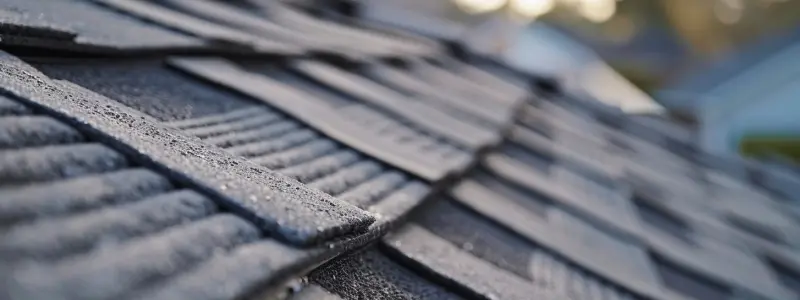
Best Practices for Roofing Safety
The foundation of roofing safety lies in the proper training and education of roofing professionals. This crucial aspect ensures that all individuals involved in roofing projects are aware of potential hazards and know how to mitigate them effectively. Training programs and continuous education initiatives play a pivotal role in promoting safety culture within the roofing industry, directly impacting the overall success and safety of roofing projects. Here are the key elements of training and education for roofing professionals:
- Comprehensive Safety Training: Before setting foot on a job site, roofing professionals should undergo comprehensive safety training. This training covers a broad range of topics, including fall protection, ladder and scaffold safety, electrical hazards, and proper use of personal protective equipment (PPE). The goal is to equip workers with the knowledge and skills necessary to recognize and avoid hazards.
- Specialized Training for Equipment and Tools: Given the variety of tools and equipment used in roofing, specialized training is essential. This includes how to correctly operate machinery such as hoists and lifts, as well as the safe handling of hand and power tools. Understanding the specific risks associated with each piece of equipment and how to mitigate them is crucial.
- Certifications and Credentials: Many organizations offer certification programs for roofing professionals. These programs typically involve both coursework and practical assessments, covering topics such as installation techniques, building codes, and, importantly, safety standards. Obtaining certifications not only enhances a roofer’s skills but also demonstrates their commitment to safety and professionalism.
- Safety Culture: Beyond formal training and education, fostering a safety culture within roofing companies is vital. This involves creating an environment where safety is always the priority, and workers feel empowered to voice concerns and suggest improvements. Regular safety meetings and discussions can help reinforce the importance of safety and ensure that it remains a central focus on every project.
The Importance of Using Safety Equipment
The use of appropriate safety equipment is a cornerstone of roofing safety, protecting workers from the inherent risks of their jobs. Safety equipment, often referred to as personal protective equipment (PPE), includes a variety of tools and gear designed to prevent injuries and accidents on roofing projects. Below, we outline the critical aspects of safety equipment in roofing:
- Personal Fall Arrest Systems (PFAS): These systems are crucial for preventing falls from heights, one of the most significant risks in roofing. A PFAS typically includes a full-body harness, a lanyard, and an anchor point, which together stop a fall in progress and minimize the impact on the worker.
- Ladders and Scaffold Systems: Safe access to the roof is essential. Ladders and scaffolds must comply with safety standards, ensuring they are stable, secure, and appropriate for the specific task. Proper setup and use are critical to prevent falls.
- Head Protection: Helmets or hard hats protect against falling objects, accidental bumps against fixed objects, and electrical hazards. They are a simple yet effective form of protection that can prevent serious head injuries.
- Eye and Face Protection: Safety glasses or face shields protect against flying debris, dust, and chemical splashes. Given the nature of roofing work, which often involves cutting, nailing, and the application of chemicals, eye and face protection is indispensable.
- Hearing Protection: Roofing can be a noisy job, especially when it involves power tools. Earplugs or earmuffs protect workers from long-term hearing damage caused by prolonged exposure to loud noises.
- Respiratory Protection: Masks or respirators are necessary when working with materials that produce dust or fumes, such as during the application of certain roofing coatings or when sawing wood. They prevent inhalation of harmful particles, protecting the respiratory system.
Investing in and correctly using the right safety equipment is not just a regulatory requirement but a practical necessity for minimizing the risks associated with roofing work. It’s advisable to choose contractors who prioritize the use of safety equipment, as this reflects their overall commitment to the safety and well-being of their workers and the quality of the project.
Regular Inspections and Maintenance of Roofing Equipment
Regular inspections and maintenance of roofing equipment are vital to ensuring the safety and efficiency of roofing projects. Well-maintained equipment not only performs better but also significantly reduces the risk of accidents and injuries. Here’s why regular checks and upkeep are integral to roofing safety best practices:
- Preventing Equipment Failure: Regular inspections can identify wear and tear or defects that might lead to equipment failure. By catching these issues early, repairs or replacements can be made before the equipment is used, thereby preventing potential accidents.
- Ensuring Safety Equipment Integrity: Safety equipment, such as harnesses and ladders, must be in optimal condition to provide effective protection. Regular maintenance checks ensure that safety gear meets the required safety standards and functions correctly at all times.
- Maximizing Efficiency: Well-maintained tools and equipment operate more efficiently, reducing the physical strain on workers and the time needed to complete tasks. This efficiency can indirectly contribute to safety by reducing the chances of overexertion and fatigue-related accidents.
- Compliance with Safety Regulations: Many safety regulations specifically mandate the regular inspection and maintenance of equipment used on construction sites, including roofing projects. Compliance with these regulations not only ensures the safety of workers but also protects businesses from potential fines and legal issues.
- Creating a Safety-First Culture: Regular maintenance routines underscore a company’s commitment to safety. When workers see that their employer invests time and resources into ensuring their equipment is safe and well-maintained, it reinforces the importance of safety in the workplace.
Implementation of Inspection and Maintenance Programs
- Scheduled Inspections: Having a regular schedule for inspecting tools, equipment, and safety gear is crucial to ensure nothing is missed. It is also important to maintain a record of these inspections and document any issues found along with the steps taken to resolve them.
- Maintenance and Repair Protocols: Once a problem is identified, it is important to establish clear protocols for maintaining or repairing the equipment. This includes determining whether the equipment can be safely fixed or if it needs to be replaced.
- Training on Proper Use and Maintenance: It is essential to provide workers with training not only on how to safely operate the equipment but also on basic maintenance checks they can perform before using it. This includes inspecting for any visible defects, ensuring proper cleaning after usage, and following appropriate storage practices to prevent any damage.
Choosing a contractor who regularly maintains their equipment demonstrates their overall professionalism and commitment to safety, ensuring that the roofing project is completed safely and to a high standard.
Emergency Preparedness and Response Planning
Effective emergency preparedness and response planning is a critical component of roofing safety best practices. It ensures that in the event of an accident or unexpected situation, immediate and appropriate actions are taken to minimize injuries and damage. This planning involves several key elements:
- Emergency Response Plan (ERP): Every roofing project should have a tailored Emergency Response Plan that outlines specific procedures for dealing with various types of emergencies, such as falls, medical incidents, fires, or severe weather conditions. This plan should include emergency contact numbers, locations of first aid kits, and evacuation routes.
- First Aid Training: Roofing professionals should be trained in basic first aid to provide immediate assistance in case of minor injuries. For more severe injuries, knowing how to stabilize the individual until professional medical help arrives can be lifesaving.
- Regular Drills: Conducting regular emergency drills ensures that everyone knows their role and actions to take in an emergency. Drills can help identify any weaknesses in the emergency plan, allowing for adjustments and improvements.
- Communication Tools: Effective communication is vital during an emergency. Roofing teams should have access to communication tools, such as walkie-talkies or cell phones, that allow them to quickly alert others about an emergency situation.
- Incident Reporting and Investigation: After an emergency, it’s crucial to report and investigate the incident to understand what happened and why. This process helps in identifying measures that can prevent similar incidents in the future.
Contractors who prioritize and have clear emergency plans demonstrate a commitment to safety and preparedness. This not only minimizes the risk of accidents but also ensures a swift and organized response should an unexpected event occur, safeguarding everyone involved in the project. Choosing a contractor with a robust emergency preparedness plan is an essential step in ensuring the safety and success of any roofing project.
Roofing Safety Tips for Homeowners and Business Owners
One of the most vital decisions you can make when undertaking a roofing project is selecting the right contractor. Hiring certified and experienced roofing contractors is not just a matter of ensuring quality workmanship; it’s also a significant factor in ensuring the safety of the project. Here’s why prioritizing certification and experience is vital:
- Knowledge of Safety Standards: Certified roofing contractors have undergone rigorous training and assessment to ensure they are knowledgeable about the latest roofing techniques, materials, and importantly, safety standards. Their certification is a testament to their commitment to safe working practices.
- Experience in Handling Complex Situations: Experience brings with it a familiarity with the myriad of challenges roofing projects can present. Experienced contractors have likely encountered a broad range of scenarios and know how to safely manage unexpected situations, reducing the risk of accidents.
- Compliance with Regulations: Certified contractors must stay up-to-date with local building codes and safety regulations. This ensures that your roofing project not only meets quality standards but is also in compliance with all safety regulations, protecting you from potential liabilities.
- Access to Quality Materials and Proper Equipment: Professional contractors who have invested in their certification and have extensive experience are more likely to use high-quality materials and the proper equipment. This commitment to quality further enhances the safety and durability of your roofing project.
- Liability and Insurance: Certified and experienced contractors are more likely to carry the necessary liability insurance and worker’s compensation. This protects you as the homeowner or business owner from potential legal and financial liabilities in the event of an accident on your property.
- Warranty and Aftercare: Professional contractors often offer warranties on their work and provide aftercare services. This means that should any issues arise post-completion, especially those related to safety or quality, they will address them promptly.
How to Verify Certification and Experience
- Check Credentials: Ask for proof of certification and check it against issuing authorities. This might include certifications from the National Roofing Contractors Association (NRCA) or an equivalent.
- Review Past Work: Experience can be gauged by reviewing past projects. Ask for references or case studies of previous work, paying attention to the complexity and safety measures implemented.
- Consult Reviews and Testimonials: Online reviews and testimonials can provide insights into a contractor’s reliability, quality of work, and adherence to safety practices.
Choosing a roofing contractor with the right credentials and experience is essential for ensuring the safety and success of your roofing project. By prioritizing these factors in your selection process, you can have peace of mind knowing that your project is in capable hands.
Importance of Regular Roof Inspections by Professionals
Regular roof inspections by professional roofing contractors are crucial for maintaining the safety and longevity of your roof. Here are some reasons why regular professional inspections are an essential component of roofing safety and maintenance:
- Early Detection of Issues: Professional roofers have the expertise to identify signs of wear, damage, or potential failure that may not be visible to the untrained eye. Early detection allows for timely repairs, preventing minor issues from escalating into major, costly problems.
- Preventative Maintenance: Regular inspections allow for the implementation of preventative maintenance measures. This proactive approach can extend the life of your roof, saving homeowners and business owners significant money over time.
- Safety Assurance: Inspectors can also assess the safety of your roof, identifying any risks that could compromise the safety of the occupants or the public. This includes checking for structural integrity, proper drainage, and the absence of loose materials that could pose a hazard.
- Compliance with Warranties: Many roofing material warranties require regular professional inspections as part of their terms. Failing to adhere to these requirements can void the warranty, leaving you without coverage in case of material failure.
Frequency of Inspections
- Routine Inspections: It’s advisable to have your roof inspected by a professional at least once a year. However, the exact frequency may vary based on the age of your roof, local weather conditions, and any prior issues.
- After Severe Weather: In addition to routine inspections, it’s wise to schedule a professional inspection after severe weather events, such as heavy storms, hail, or high winds. These conditions can cause damage that may not be immediately obvious.
- When Buying or Selling a Property: A professional roof inspection is recommended when buying or selling a property. This inspection can identify any existing or potential roofing issues, affecting the property’s value and negotiation process.
We know how important it is to choose the right roofing professional for your inspections. That’s why we suggest looking for contractors with certifications, good reviews, and expertise in your specific roofing type. With regular professional roof inspections, you’re not only safeguarding your property but also ensuring the safety, efficiency, and longevity of your roofing system for those who use it. You can trust B&M Roofing; it’s an investment that pays off in the long run.
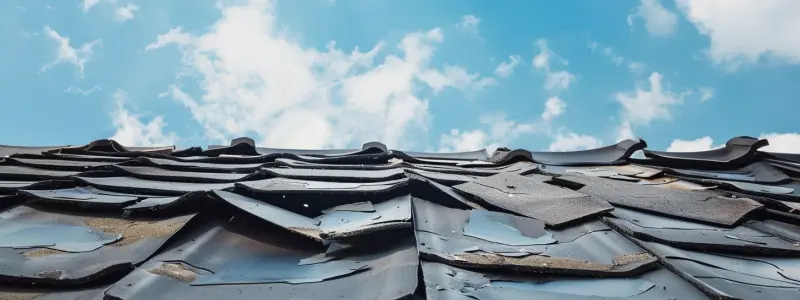
Final Words
When it comes to roofing, it is essential to follow safety protocols and best practices. Whether it’s through ensuring the use of safety equipment, understanding the basics of roofing safety, or choosing the right roofing contractor, each aspect plays a crucial role in maintaining a safe environment for everyone involved.
By embracing roofing safety standards and best practices, you can collectively enhance the safety, efficiency, and quality of roofing projects. It’s a shared responsibility that benefits not only the immediate stakeholders but also the wider community by promoting a culture of safety and excellence in the roofing industry.
We’ve discovered that choosing reliable and knowledgeable roofing contractors, like B&M Roofing, is crucial for a secure and prosperous roofing project. With their proficiency and unwavering commitment to safety standards, you can rest assured that your property is in good hands. Protect your investment with a job well done by B&M Roofing. Contact us today!
Choosing the Right Roof for Your Colorado Home
Choosing the right roof for your Colorado home is a critical decision not only for its appearance but also for its ability to protect your household, increase its energy efficiency, and withstand the unique weather conditions that define the Colorado climate. Colorado’s varied landscapes, ranging from the majestic peaks of the Rocky Mountains to the arid plains of the Eastern Slope, are accompanied by equally varied weather patterns. These weather patterns can range from heavy snowfall and freezing temperatures in the winter to intense sun and occasional hailstorms in the summer.
For homeowners and business owners who may not be familiar with the intricacies of roofing materials and construction, navigating the options can seem daunting. However, the importance of this choice cannot be overstated. The right roof does more than just cover your home; it is critical in its structural integrity, energy efficiency, and overall value.
In this article, we will guide you through the essential considerations and options available to ensure that your property is equipped with a roof that is not only aesthetically pleasing but also durable and suitable for Colorado’s challenging climate. Whether you’re building a new home, replacing an old roof, or simply exploring ways to enhance your property’s resilience, understanding how to choose the right roof is the first step towards securing your investment and ensuring the comfort and safety of those within.
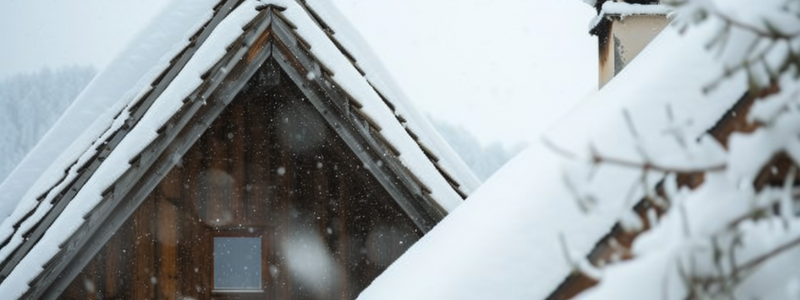
Understanding Colorado’s Climate
When embarking on choosing the right roof for your Colorado home, comprehending the state’s unique climate is paramount. Colorado’s weather is marked by its diversity and extremity, which significantly impacts the selection of roofing materials and designs. Here are the key climate characteristics and their implications for roofing:
- Heavy Snowfall and Freezing Temperatures:
- Winter in Colorado can place a significant weight load on roofs due to heavy snowfall.
- The freeze-thaw cycle can damage roofing materials, as water expands when it freezes after seeping into cracks.
- Intense UV Exposure:
- Summer brings intense sun, which can degrade many roofing materials, reducing their lifespan.
- Sudden Hailstorms:
- Hail can cause immediate and severe damage to roofs not designed to withstand such impacts, leading to leaks and structural problems.
- High Winds:
- Strong gusts can lift or remove roofing materials that are not properly secured or inherently less resistant to wind uplift.
Given these conditions, the choice of roofing material and construction must be made with a thorough understanding of Colorado’s climate. The right roof will:
- Protect your home from the elements.
- Contribute to energy efficiency by maintaining a stable internal temperature, regardless of external weather conditions.
We’re thrilled to help Colorado homeowners make informed roofing decisions by understanding the unique local climate. Our expertise ensures you’ll have materials and designs that can withstand any weather challenge.
Types of Roofing Materials Suitable for Colorado Homes
Choosing the right roof for your Colorado home involves selecting materials that can withstand the state’s diverse and extreme weather conditions. Here’s a breakdown of the most suitable roofing materials for Colorado homes, along with their benefits and drawbacks:
- Asphalt Shingles:
- Benefits: Cost-effective, widely available, and come in various colors and styles. Good resistance to wind and hail when installed with proper reinforcement.
- Drawbacks: Shorter lifespan compared to other materials and can be prone to damage from extreme temperature fluctuations.
- Metal Roofing:
- Benefits: Exceptionally durable, long lifespan, excellent for snow shedding, and energy-efficient. Resistant to hail damage and high winds.
- Drawbacks: Higher initial cost and requires professional installation for optimal performance.
- Slate Roofing:
- Benefits: Offers a natural look, extremely durable, long lifespan, and fire-resistant. Performs well in heavy snow and hail conditions.
- Drawbacks: Very heavy, requiring additional structural support, and is one of the most expensive roofing options.
- Tile Roofing (Clay or Concrete):
- Benefits: Durable, long lifespan, excellent in high-heat conditions, and offers a unique aesthetic. Good resistance to hail and fire.
- Drawbacks: Heavy like slate and can be expensive. Requires a reinforced roof structure to support the weight.
- Composite Roofing:
- Benefits: Made from a mixture of materials, can mimic the look of wood, slate, or tile. Lightweight, durable, and with a moderate cost. Good resistance to fire, wind, and hail.
- Drawbacks: Lifespan varies with quality, and not all composite materials offer the same level of durability.
When selecting a roofing material for your Colorado home, consider:
- Durability: The material’s ability to withstand heavy snow, hail, and UV exposure.
- Weight: Ensure your home’s structure can support the weight of materials like slate or tile.
- Cost: Factor in both the initial installation cost and the long-term maintenance and replacement costs.
- Aesthetic: Choose a material that complements your home’s architectural style and the surrounding landscape.
Each material offers a unique set of advantages and challenges, making it crucial to weigh these factors carefully. The right choice will balance durability, weight, cost, and aesthetic appeal, ensuring your roof is equipped to protect your home against Colorado’s harsh climate while enhancing its overall value and appearance.
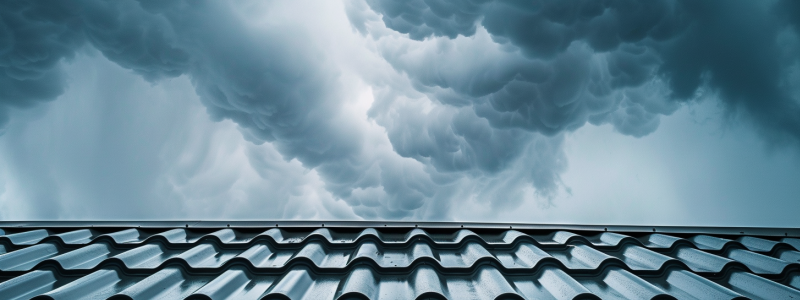
Factors to Consider When Choosing the Right Roof
When selecting the right roof for your Colorado home, several critical factors must be taken into account to ensure that your choice not only meets your aesthetic preferences but also stands up to the state’s challenging weather conditions. Here’s a breakdown of these key considerations:
- Durability and Weather Resistance:
- The material’s ability to withstand Colorado’s heavy snow, hail, high winds, and intense UV exposure is paramount. Opt for materials known for their resilience in these conditions.
- Energy Efficiency:
- Consider how well the roofing material insulates your home and reflects sunlight, contributing to lower heating and cooling costs. Materials that offer better insulation and reflectivity can significantly reduce energy expenses.
- Aesthetic Appeal:
- The roof should complement your home’s architectural style and the surrounding environment. The right material and color can enhance your home’s curb appeal and potentially increase its market value.
- Cost:
- Evaluate both the upfront installation costs and the long-term maintenance and replacement costs. While some materials may have a higher initial cost, their durability and lifespan could offer savings over time.
- Weight:
- Ensure that your home’s structure can support the weight of the chosen material. Heavy materials like slate and tile may require additional structural reinforcement, adding to the project’s cost.
- Local Building Codes and HOA Regulations:
- Be aware of any local building codes or homeowners association (HOA) regulations that may restrict the use of certain roofing materials or colors in your area.
- Sustainability:
- For homeowners concerned with environmental impact, consider roofing materials that are recyclable and have a lower carbon footprint. Some materials also contribute to a cooler roof, reducing the urban heat island effect.
- Maintenance Requirements:
- Understand the maintenance needs of each material. Some require more frequent inspections and repairs to maintain their integrity and appearance over time.
Homeowners and business owners should carefully consider various factors before deciding on a roofing option that balances practicality with personal preference. It’s important to consult with a professional roofing contractor who understands the local climate and building codes to get valuable insights and make an informed decision that best fits your specific needs. Remember, we are here to help you with your roofing needs.
Maintenance and Longevity
The maintenance and longevity of your roof are crucial factors to consider when choosing the right roof for your Colorado home. A well-maintained roof not only extends the life of your investment but also ensures your home remains safe and energy-efficient. Here are key points to understand about maintaining different roofing materials and how they impact the longevity of your roof:
- Regular Inspections:
- Conducting regular inspections, especially after severe weather events, can help identify and address minor issues before they escalate into major problems. It’s recommended to inspect your roof at least twice a year.
- Cleaning and Maintenance:
- Different materials require different levels of maintenance. For instance, asphalt shingles may need periodic cleaning to remove algae or moss, while metal roofs might need checks for rust or corrosion. Tile roofs should be inspected for cracked or broken tiles, and debris should be cleared to prevent water buildup.
- Impact of Colorado’s Climate:
- The longevity of roofing materials in Colorado can be significantly affected by the state’s climate. Materials that are resistant to UV rays, hail, and thermal cycling (the process of expanding and contracting due to temperature changes) tend to have a longer lifespan.
- Expected Lifespan of Materials:
- Asphalt shingles, the most common roofing material, typically last between 15 to 30 years, depending on the quality and maintenance.
- Metal roofs can last 40 to 70 years, with some materials lasting even longer with proper care.
- Slate and tile roofs offer exceptional longevity, often exceeding 100 years, but require a strong structural foundation due to their weight.
- Composite roofing materials have varied lifespans, generally between 30 to 50 years, depending on the quality and maintenance.
- Preventative Measures:
- Taking preventative measures, such as proper insulation and ventilation in your attic, can prevent ice dams and reduce wear on your roof.
- Immediate repair of minor damages, like replacing missing shingles or sealing leaks, can extend the life of your roof.
- Professional Maintenance:
- While homeowners, professional inspections and repairs can perform some maintenance tasks ensure that your roof remains in optimal condition. Professionals can spot potential issues that are not obvious to the untrained eye.
Understanding the maintenance requirements and expected longevity of your chosen roofing material is essential for making an informed decision. A roof that is well-suited to Colorado’s climate and properly maintained can provide decades of protection for your home, making it a wise investment in the long-term safety and efficiency of your property.
Professional Installation and Choosing the Right Contractor
Ensuring professional installation and choosing the right contractor are critical steps in choosing the right roof for your Colorado home. A high-quality roofing material can only perform to its fullest potential when installed correctly. Here are essential tips and considerations for selecting a roofing contractor and ensuring the installation process meets the highest standards:
- Research and Referrals:
- Start by researching local roofing contractors with a solid reputation for quality workmanship. Ask for referrals from friends, family, or neighbors who have had roofing work done recently.
- Check Credentials and Experience:
- Verify the contractor’s credentials, including licensing and insurance. Ensure they have experience with the specific type of roofing material you’re considering. Specialized materials like slate or tile require specific expertise.
- Look at Reviews and Past Work:
- Check online reviews and ask for references to assess the contractor’s track record. If possible, view previous installation projects to gauge the quality of their work.
- Get Multiple Quotes:
- Obtain quotes from several contractors to compare prices, but remember that the lowest bid isn’t always the best. Consider the quality of materials, scope of work, and warranty offered.
- Ask About the Installation Process:
- Discuss the installation process in detail. Understand the timeline, the steps involved, and how the contractor plans to address any potential challenges specific to your property or chosen material.
- Understand the Warranty:
- Ensure you understand the warranty on both the materials and the installation. A reputable contractor will offer a warranty that covers both aspects and clearly explains what is included and any exclusions.
- Communication and Professionalism:
- Choose a contractor who communicates clearly and professionally. They should be willing to answer your questions and provide updates throughout the project.
- Permits and Regulations:
- A professional contractor will handle all necessary permits and ensure that the installation complies with local building codes and regulations, including any specific to Colorado’s climate and environmental conditions.
- Post-Installation Support:
- Inquire about the contractor’s policy for handling any issues that may arise after the installation is complete. Reliable post-installation support is a sign of a reputable contractor.
Selecting the appropriate roofing contractor is just as important as choosing the right roofing material. A competent and experienced contractor guarantees that your roof is installed to the highest standards, providing the best possible protection and durability for your Colorado home. By following these guidelines, you can make an informed decision and have complete peace of mind, knowing that your roofing project is in capable hands.
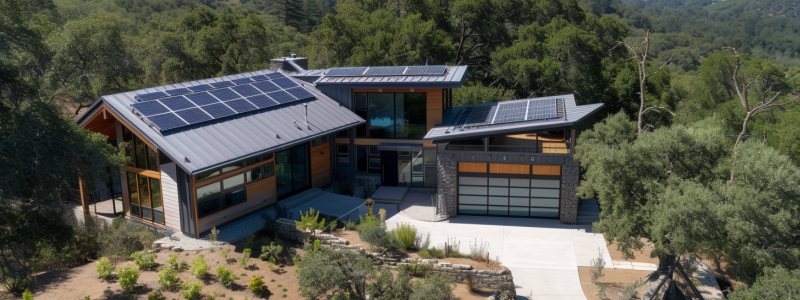
Final Advice
Choosing the right roof for your Colorado home is a multifaceted decision that requires careful consideration of the state’s unique climate, the durability and energy efficiency of various roofing materials, and the importance of professional installation. By understanding the specific challenges posed by Colorado’s weather, from heavy snowfall and hail to intense UV exposure, homeowners can select materials that offer the best protection and longevity for their homes.
The selection process involves balancing factors such as durability, aesthetic appeal, energy efficiency, and cost, while also considering the weight of the materials and local building codes. Materials like asphalt shingles, metal roofing, slate, and tile each have their advantages and maintenance requirements, making it crucial to choose a material that aligns with your needs and preferences.
Professional installation by a reputable contractor like B&M Roofing is paramount to ensure that the roof is installed correctly and performs as expected. Homeowners should conduct thorough research, check credentials, and communicate clearly with potential contractors to ensure the best outcome for their roofing project.
Why us?
We are thrilled to help you find the perfect roof for your Colorado home! Our team understands the importance of balancing style with functionality, which is why we prioritize durability, energy-efficiency, and cost-effectiveness. Our expert approach to selection and installation ensures that your roof will be a wise investment, safeguarding your home and increasing its value for years to come. With our help, you can trust that your roof will not only look great, but also stand up to the toughest weather conditions.
Roof Restoration
Amidst the scenic landscapes of Colorado, the roof of a home or business serves as a silent sentinel against the harsh weather. However, even the strongest roofs can face deterioration over time. This is where the concept of “Roof Restoration” comes in. Roof Restoration is not just a simple repair job; it is a comprehensive process that rejuvenates your existing roof, increasing its durability and lifespan. It is an important service that ensures the safety and longevity of the most important protective barrier of your property.
Understanding the importance of roof restoration is vital for every homeowner and business owner. A well-maintained roof not only provides shelter but also adds value to your property. In the ever-changing climate of Colorado, where harsh winters and sunny summers are the norms, ensuring your roof is in optimal condition is not just a matter of aesthetics but of safety and financial prudence.
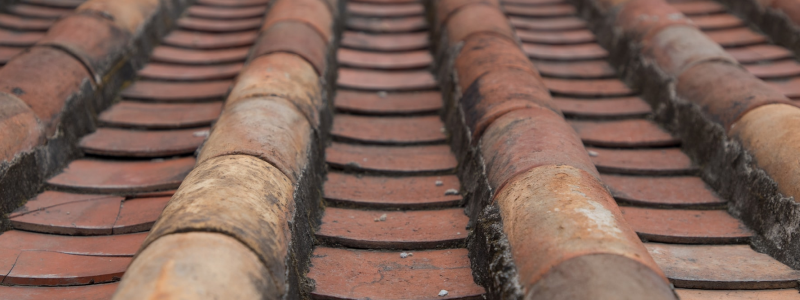
What Is the Difference Between Restoration and Replacement?
Roof Restoration is not just a buzzword in the roofing industry; it’s a strategic decision that offers a surplus of benefits to homeowners and business owners alike. Let’s delve into the advantages of opting for restoration over a complete roof replacement:
- Cost-Effectiveness: One of the most compelling reasons to choose Roof Restoration is its cost-saving potential. Restoration is typically more affordable than a full roof replacement, allowing property owners to achieve significant savings.
- Extended Roof Lifespan: A well-executed restoration can add years to your roof’s life, ensuring that you get the most out of your initial investment.
- Enhanced Energy Efficiency: A restored roof can improve the energy efficiency of your property. With the right materials and techniques, a restored roof can reflect more sunlight and absorb less heat, leading to cooler interiors and reduced air conditioning costs.
- Eco-Friendly Choice: Roof Restoration is an environmentally-friendly option. Instead of discarding old roofing materials, restoration reuses much of the existing material, reducing landfill waste.
- Minimal Disruption: Unlike a full replacement, which can be a lengthy and disruptive process, restoration is quicker and causes minimal disturbance to the occupants of the property.
- Preservation of Property Aesthetics: Restoration maintains the original look and feel of your property, ensuring that its aesthetic appeal remains intact.
Difference Between Restoration and Replacement: Clearing Common Misconceptions
When it comes to maintaining the integrity of your roof, understanding the distinction between “Roof Restoration” and roof replacement is crucial. These terms, while often used interchangeably, refer to two distinct processes, each with its own set of advantages and appropriate scenarios.
Roof Restoration:
- Definition: Roof Restoration involves rejuvenating the existing roof by addressing specific areas of damage, applying protective coatings, and enhancing its overall functionality without replacing the entire structure.
- Applicability: Ideal for roofs that are not extensively damaged but show signs of wear and tear. It’s a preventive measure that can extend the roof’s lifespan by several years.
- Benefits: More cost-effective than replacement, environmentally friendly due to reduced waste, and less disruptive to property occupants.
Roof Replacement:
- Definition: This process entails removing the entire existing roof and installing a new one from scratch. It’s a comprehensive solution that addresses severe or widespread damage.
- Applicability: Necessary when the roof has reached the end of its lifespan, has extensive damage, or when restoration is no longer a viable option.
- Benefits: Provides a fresh start with a new roof that can last for decades, ensures complete resolution of all existing issues, and can increase property value.
While both restoration and replacement have their merits, the decision between the two should be based on the roof’s condition, age, and the specific needs of the property.
What Are Some Tips for Roof Restoration? Best Practices
Roof Restoration is a meticulous process that requires careful planning and execution. For homeowners and business owners in Denver, Colorado, ensuring the effectiveness of the restoration process is paramount. Here are some best practices and things to consider for a successful Roof Restoration:
- Routine Inspections: Regularly inspect your roof for signs of damage or wear. Early detection can prevent minor issues from escalating into major problems.
- Choose Quality Materials: The longevity and effectiveness of your restoration largely depend on the materials used. Opt for high-quality, durable materials that can withstand the Colorado climate.
- Hire Experienced Professionals: The expertise of the contractor plays a significant role in the outcome of the restoration. Ensure you hire professionals with a proven track record in roof restoration.
- Timing Matters: The best time for roof restoration is during dry weather. Avoid rainy or snowy seasons as moisture can hinder the restoration process.
- Safety First: Ensure that all safety protocols are followed during the restoration. This includes using safety gear and ensuring that the work area is secure.
- Address Problem Areas: Pay special attention to areas that are prone to leaks or damage. These might include areas around chimneys, vents, and skylights.
- Stay Informed: Educate yourself about the restoration process. Being informed allows you to make better decisions and ensures that you get the best value for your money.

Roof Sealing: What Is It, And Is It a Good Idea For Your Roof?
One term that often emerges is “roof sealing.” But what exactly is roof sealing, and why is it considered beneficial for roofs, especially in places like Denver, Colorado?
Understanding Roof Sealing:
Roof sealing refers to the application of a protective layer or coating on the roof’s surface. This sealant acts as a barrier against external elements, such as rain, snow, and UV rays, preventing them from directly impacting the roof material. The primary purpose of roof sealing is to enhance the roof’s waterproofing capabilities, ensuring that water doesn’t seep into the underlying layers.
Benefits of Roof Sealing:
- Waterproofing: As mentioned, the primary benefit of roof sealing is its ability to repel water, reducing the chances of leaks and water damage.
- UV Protection: The sealant can reflect harmful UV rays, preventing them from deteriorating the roof material.
- Temperature Regulation: A sealed roof can help in regulating the temperature inside the building, leading to energy savings.
- Extended Roof Life: By protecting the roof from various external factors, sealing can extend the roof’s lifespan.
- Cost Savings: In the long run, a sealed roof requires less maintenance and repair, leading to cost savings for homeowners and business owners.
While roof sealing offers numerous benefits, it’s essential to ensure that the process is done correctly. Using high-quality sealants and hiring experienced professionals can make a significant difference in the outcome.
Roofing Supplies and Coating
The choice of roofing materials plays a pivotal role in the overall functionality and longevity of a roof. With an overabundance of options available in the market, understanding the significance of each material becomes crucial, especially when considering Roof Restoration.
Common Roofing Materials:
- Asphalt Shingles: One of the most popular choices, asphalt shingles are known for their durability and cost-effectiveness. They come in a variety of colors and styles, making them suitable for various architectural designs.
- Metal Roofing: Metal roofs are revered for their longevity and resistance to extreme weather conditions. They are also energy-efficient, reflecting sunlight and reducing cooling costs.
- Wood Shakes: Offering a natural and rustic appearance, wood shakes are made from split logs. They provide excellent insulation but require regular maintenance.
- Slate Tiles: Slate is a natural stone material known for its longevity and aesthetic appeal. While heavy, slate roofs can last for centuries with proper care.
- Clay or Concrete Tiles: These tiles are fire-resistant and can withstand harsh weather conditions. They are often used in regions with a hot climate due to their insulating properties.
Importance of Roofing Materials:
- Protection: The primary function of any roofing material is to offer protection against external elements like rain, snow, and UV rays.
- Energy Efficiency: Some materials, like metal roofing, reflect sunlight, leading to reduced energy costs.
- Aesthetic Appeal: The choice of material can enhance the visual appeal of a property, complementing its architectural style.
- Lifespan: High-quality materials can extend the life of the roof, reducing the need for frequent repairs or replacements.
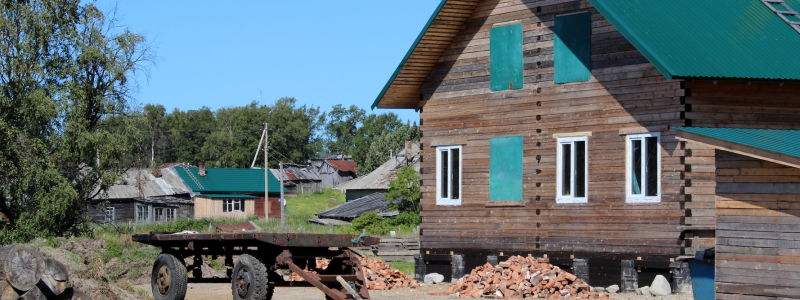
Informed Decisions for a Sturdy Roof: Wrapping Up the Essentials of Roof Restoration
The integrity of your roof is paramount for the safety and longevity of your property. Throughout our discussion on Roof Restoration, we’ve underscored its significance, from understanding its core principles to the benefits it offers over a complete overhaul. We’ve illuminated the protective shield that roof sealing provides and the pivotal role of various roofing materials in determining a roof’s durability.
Key Takeaways:
- Roof Restoration: A proactive approach that rejuvenates your existing roof, extending its lifespan, and warding off potential damages.
- Cost-Effectiveness: Restoration is often more affordable than a full replacement, making it a financially sound choice.
- Environmental Consideration: Opting for restoration over replacement is environmentally friendly, reducing waste and promoting sustainability.
- Protection and Aesthetics: Roof sealing and the choice of roofing materials not only ensure protection but also enhance the aesthetic appeal of your property.
For those in Denver, Colorado, regular roof maintenance and timely restoration are not mere suggestions but necessities. By being proactive, homeowners and business owners can ensure the safety of their property, making a wise financial decision in the process.
If roof restoration is on your horizon, don’t hesitate to reach out to B&M Roofing. Our seasoned team is poised to guide you, ensuring your property in Colorado stands tall against the test of time.
